In order to get from El Salvador to Nicaragua, we first have to cross Honduras. Since we unfortunately have a 12-person motorcycle group in front of us at the border on their way to South America, our planned entry and exit of Honduras on the same day won’t work. It takes us over five hours just to enter Honduras: issuing the import permits (TIPs) for the motorcycles and our vehicles simply takes forever. Since two such border crossings in one day would strain our nerves and patience, we decide to spend the night in Honduras just before the border with Nicaragua (actually, the border to Nicaragua that has yet to be crossed is considered the most difficult and time-consuming in Central America). We don’t see much of Honduras itself… extremely dirty, lots of traffic and cheap fuel… we can’t say much more after one day of transit.
The border crossing to Nicaragua the next day goes a little better than expected… despite Shujaa having to go through a scanner again for the first time since Zimbabwe and Israel: In addition to weapons and drugs, drones and foreign journalists are also banned from entering the country… a consequence of the long-standing authoritarian regime of Nicaragua, which has broken off diplomatic relations even with the Vatican State!
Our own experiences in the country, however, are mostly positive: with our super nice guide “Fausto Junior” we cross the Canon de Somoto directly behind the border. We first hike into the gorge through a great, deeply cut canyon. Then we swim longer passages and on the last stretch we are picked up by a rowing boat: a great adventure experience! Then we head to the highlands of Tisey, where we enjoy the cool temperatures and go on great hikes in beautiful mountain vegetation. We also visit a nearby cigar factory: It is unbelievable how intensively the leaves exude their aroma in the factory. It smells really pleasant… completely different than when a cigar burns. However, in the large warehouse it is so massive that it almost takes our breath away. Over 1,000 people work in this factory. Exciting to watch while making, cutting and rolling.
Unfortunately, the pleasant climate doesn’t stay with us for long and when we reach the city of Leon, located on the Pacific coastal plain, we have almost 40 degrees. We think the city, known for its colonial architecture, the cathedral with a snow-white, accessible domed roof and its cool restaurants, is nice… but it does not stand up to e.g. Antigua in Guatemala or Granada, which we will visit in a couple of days.
Climbing the Cerro Negro volcano is also impressive…a very active volcano that last erupted in 1968. Even the journey with our quad Shujoo is a lot of fun (the slopes would be much too small for Shujaa) and the climb on pure volcanic rocks on the “Direttissima route” is tough: one step forward, two steps back. The only thing that helps are extremely quick steps… which of course are exhausting. We are rewarded with a great sunset and the return trip with Shujoo in almost darkness across the extensive lava fields into the sunset is really fun!
We also have a very special experience at the Masaya volcano. For the first time we can stand on the edge of a crater, the volcano is constantly smoking and when it gets dark we see the lava bubbling at the bottom. Exciting
We have a very special experience at the Masaya volcano. For the first time we can stand on the edge of a crater, the volcano is constantly smoking and when it gets dark we see the lava bubbling in the vent. Exciting
Granada, located on Lago de Nicaragua (the largest inland lake in Central America), is a great city: lots of churches, great colonial buildings and a nice atmosphere. There is also a windy and beautiful, but unfortunately also incredibly littered, parking space right on the lake, which makes the heat more bearable and enables Karin to cure her stomach infection; We suspect a croissant from a bakery in Leon is to be blamed. A nice private boat trip through the nearby archipelago of over 350 small volcanic islands and a short stop at the turquoise Laguna de Apoyo round off our pleasant stay.
Then it’s back to the Pacific coast, to the beautiful Playa Amarillo. After cutting away a few branches, we can drive to our great overnight spot. There we stand under the shade of trees on a long, lonely beach for two days before we leave this country again after just nine days. We leave Nicaragua the way we entered it: by having to send Shujaa through the scan! A really nice country, still very authentic and not touristy at all, but without any real highlights. Unfortunately, the people seemed far less friendly to us than in the countries we have visited so far and the men in particular showed very macho behavior, which you can clearly feel at the border and on the street.


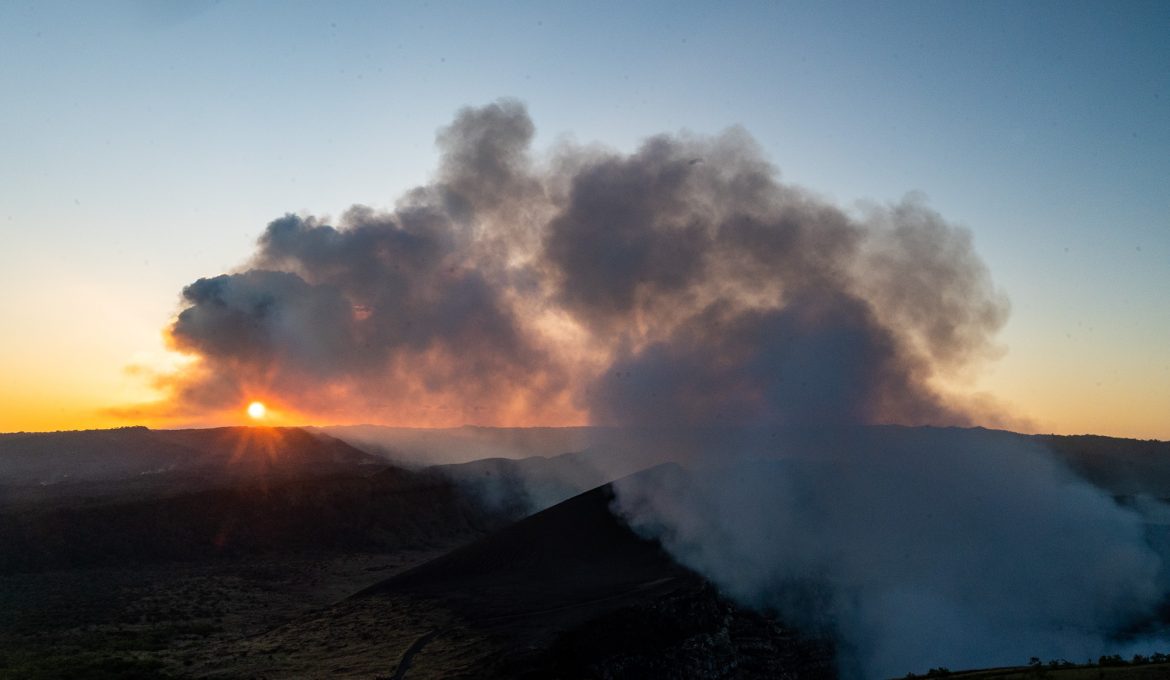
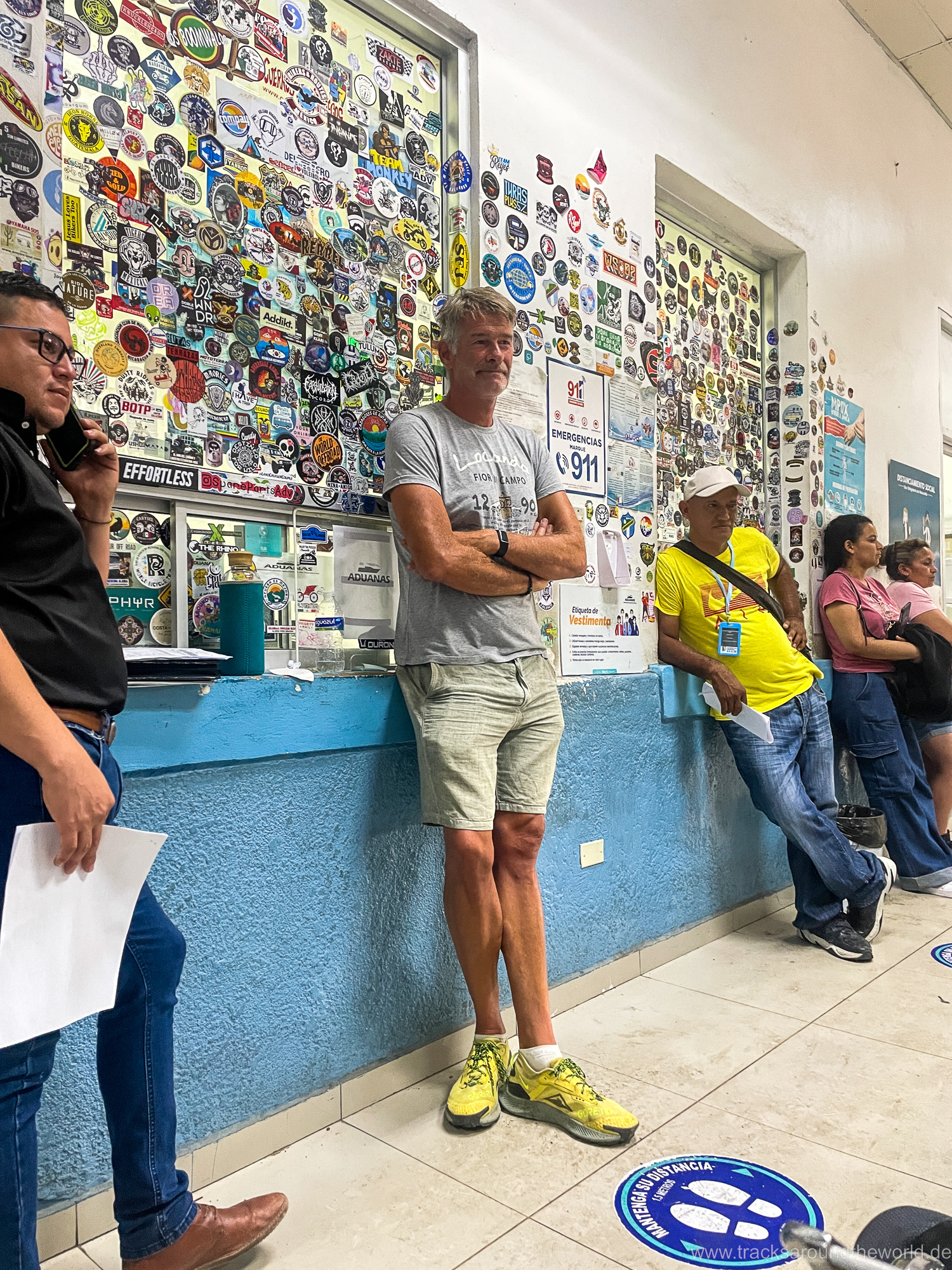
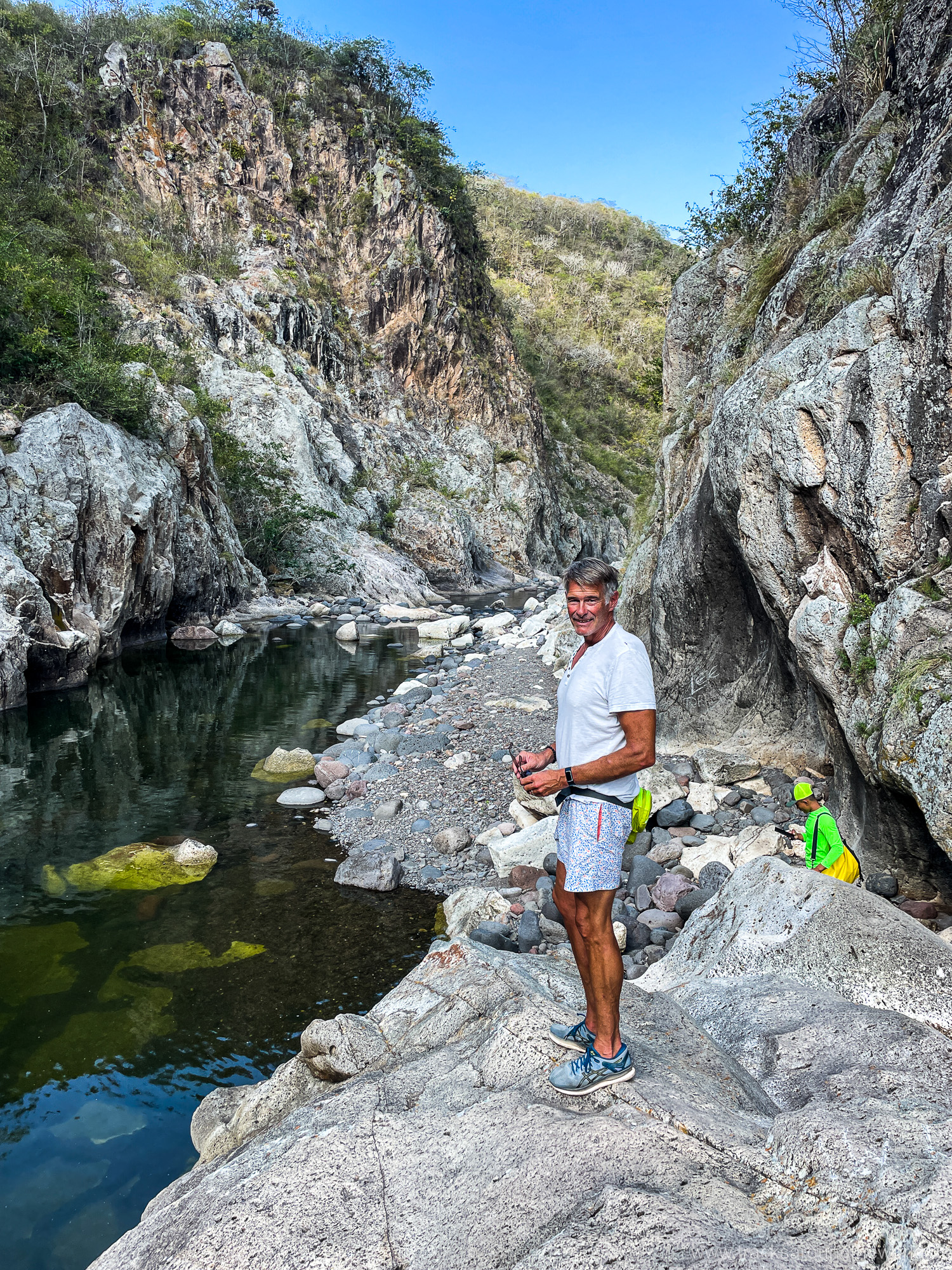
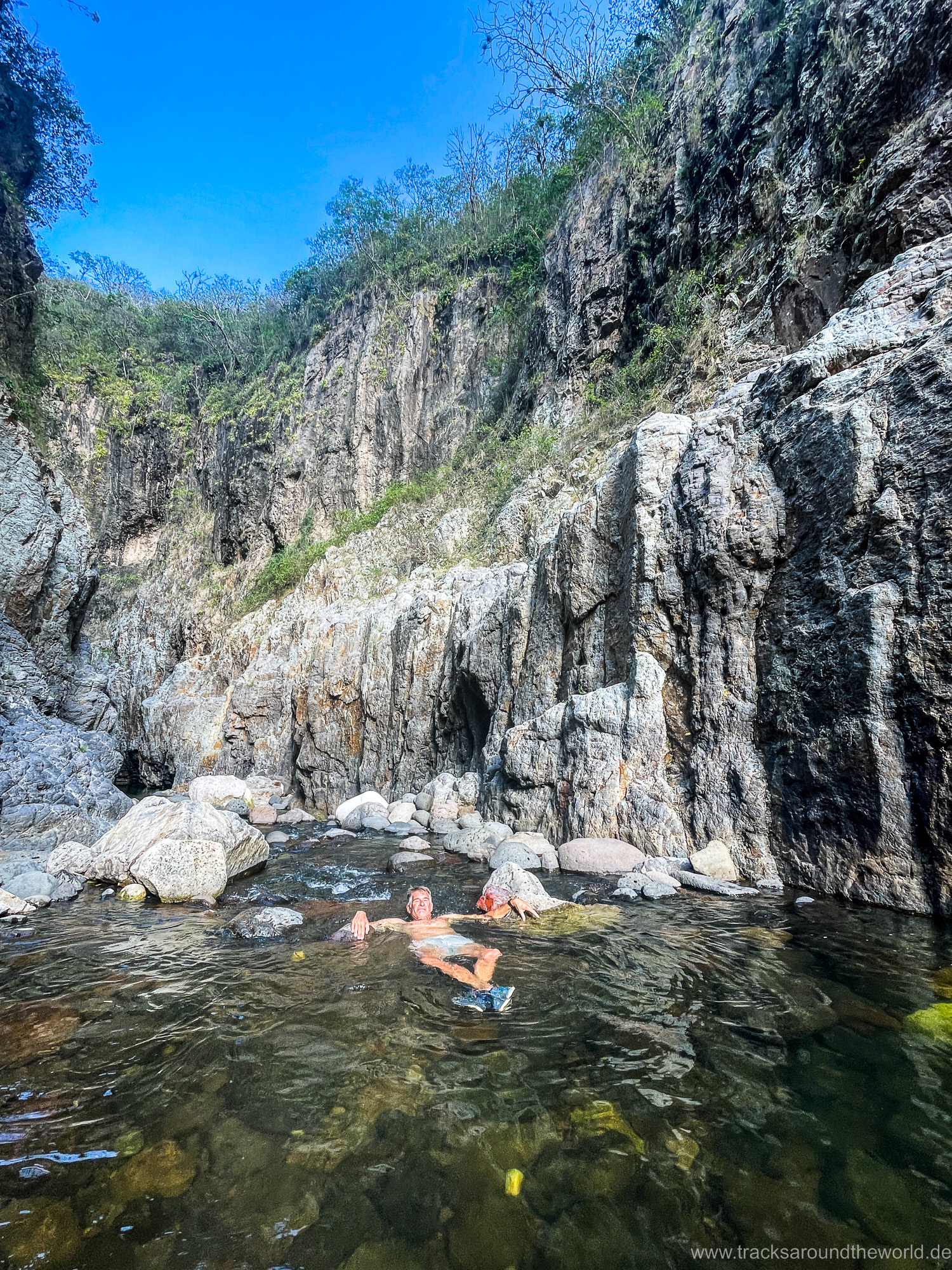
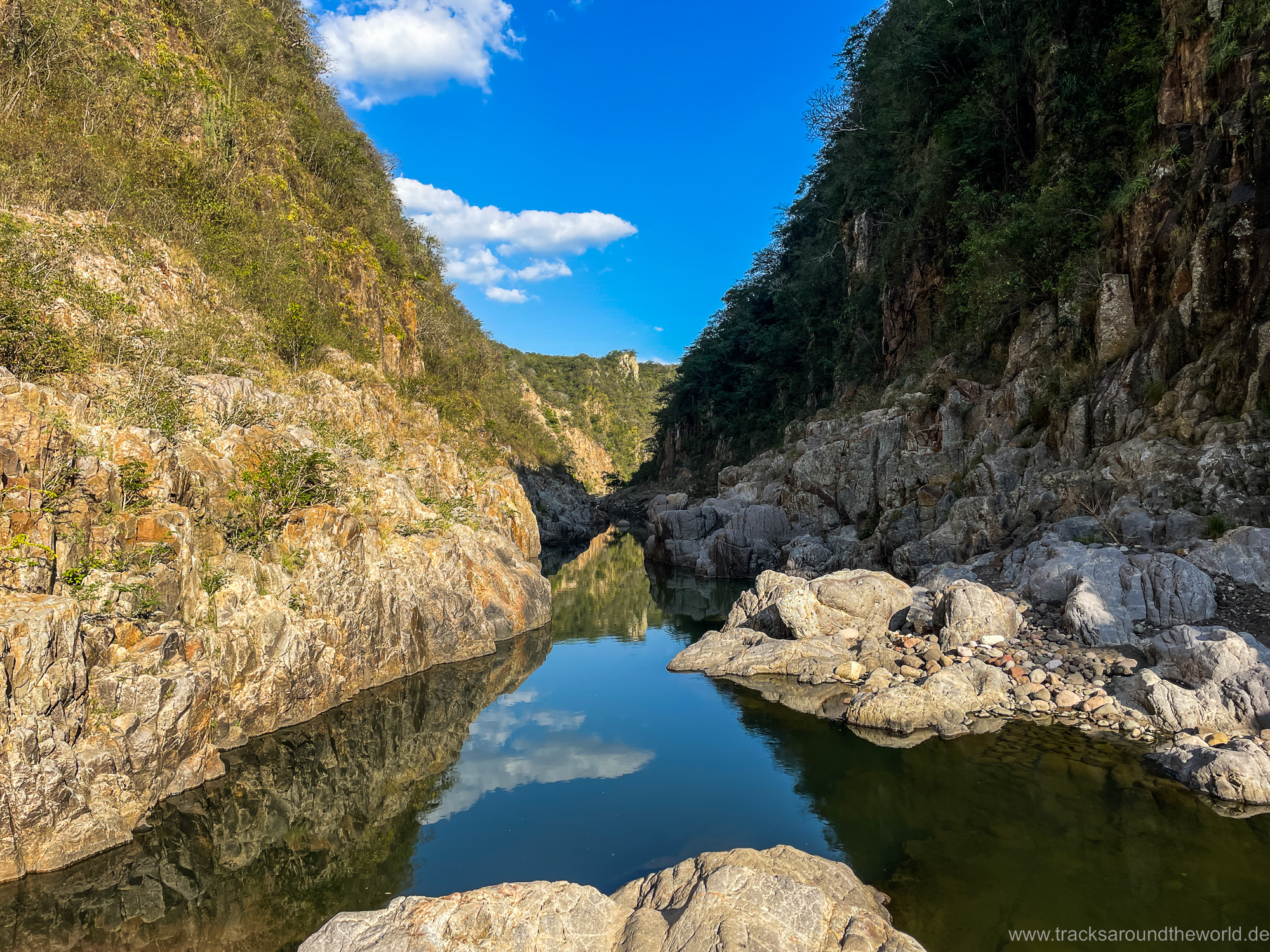
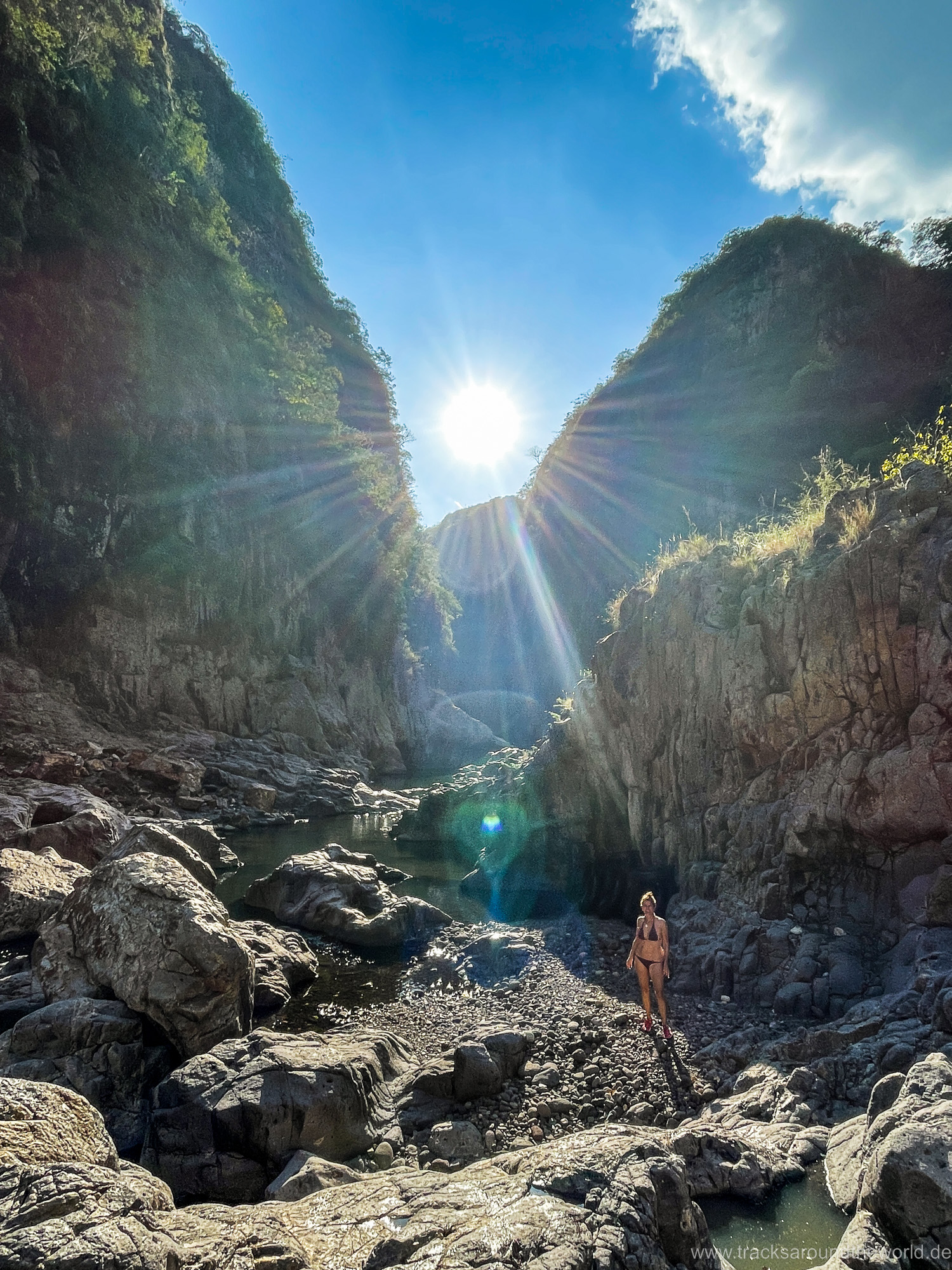
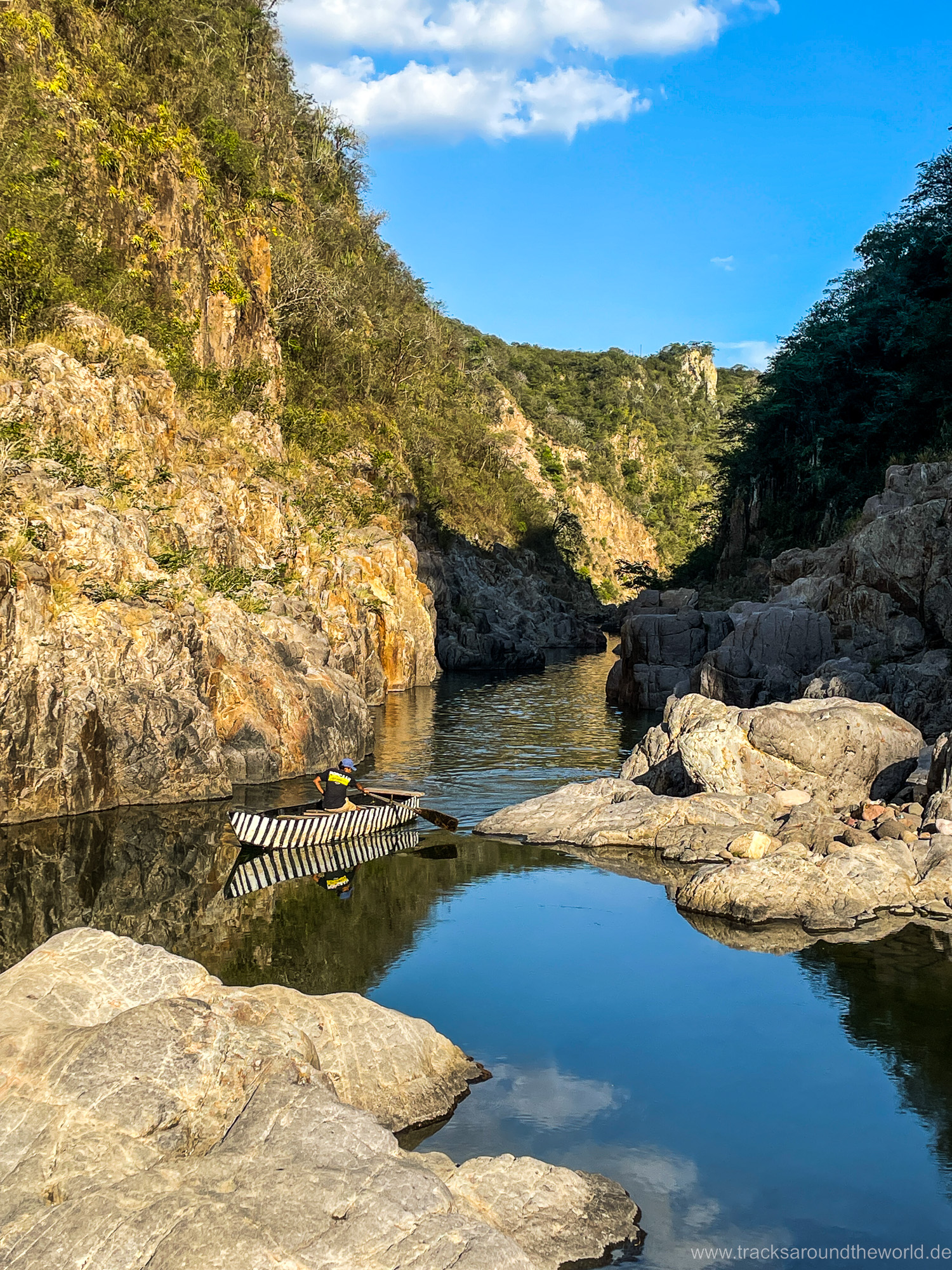
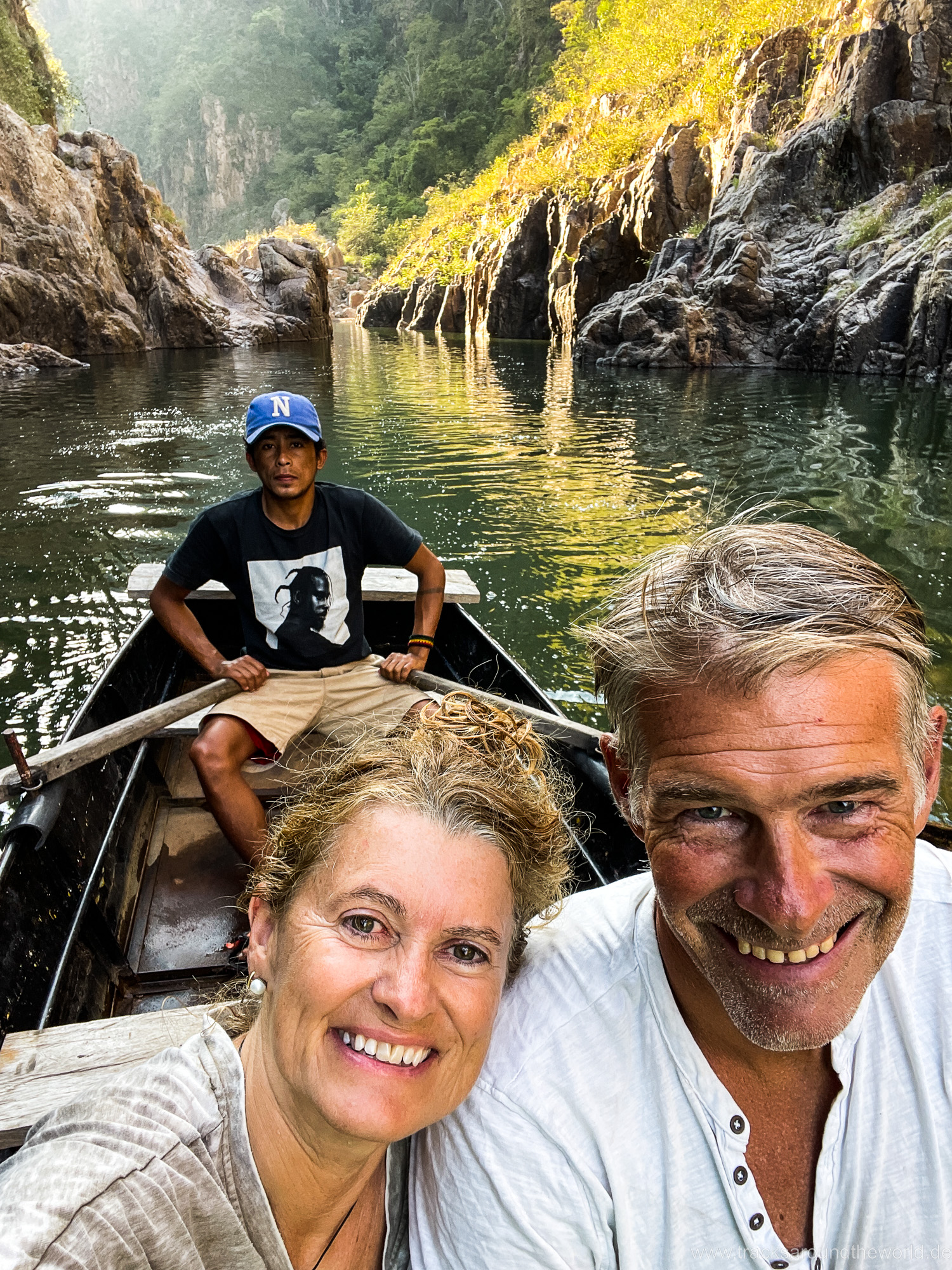
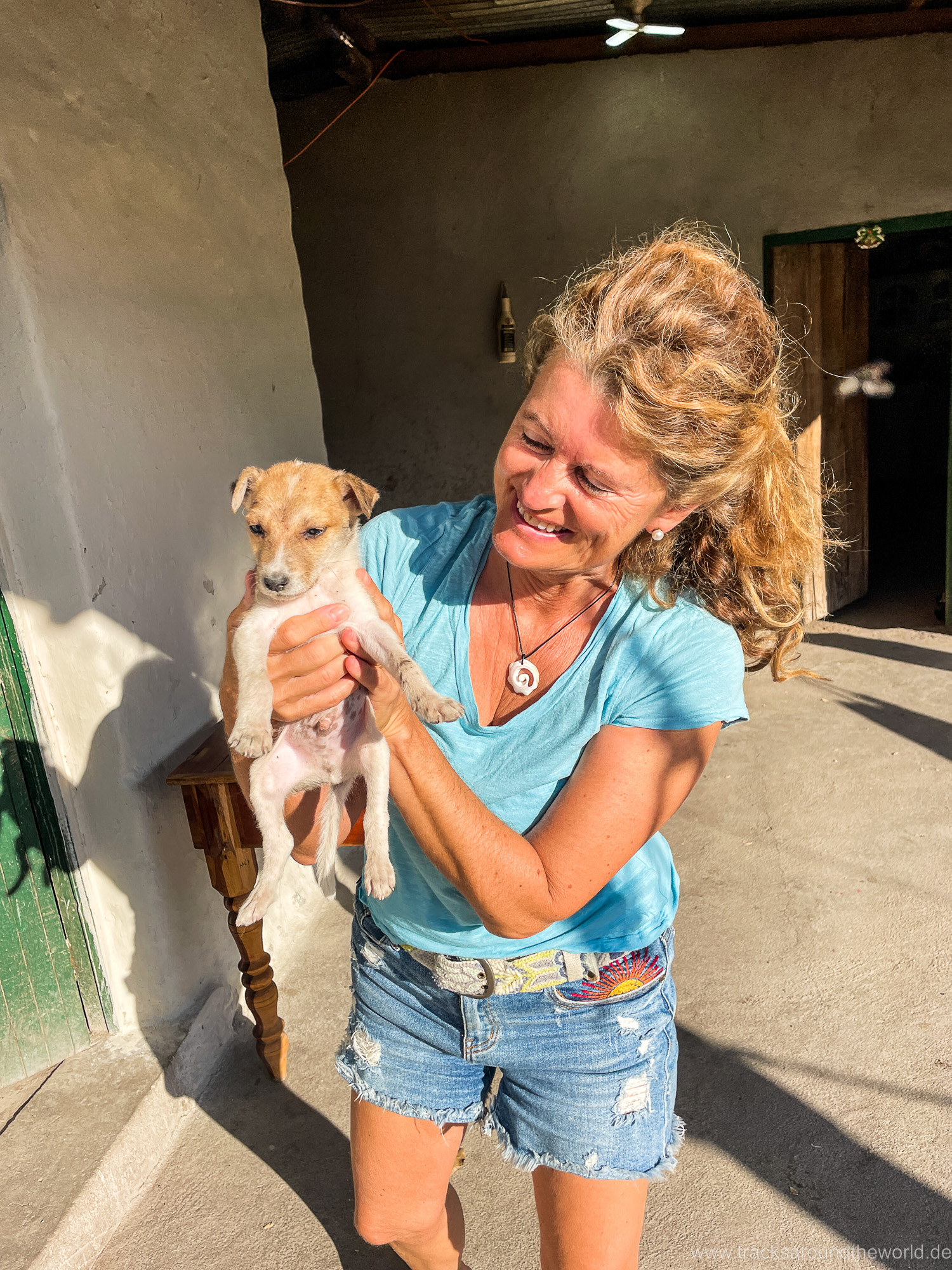
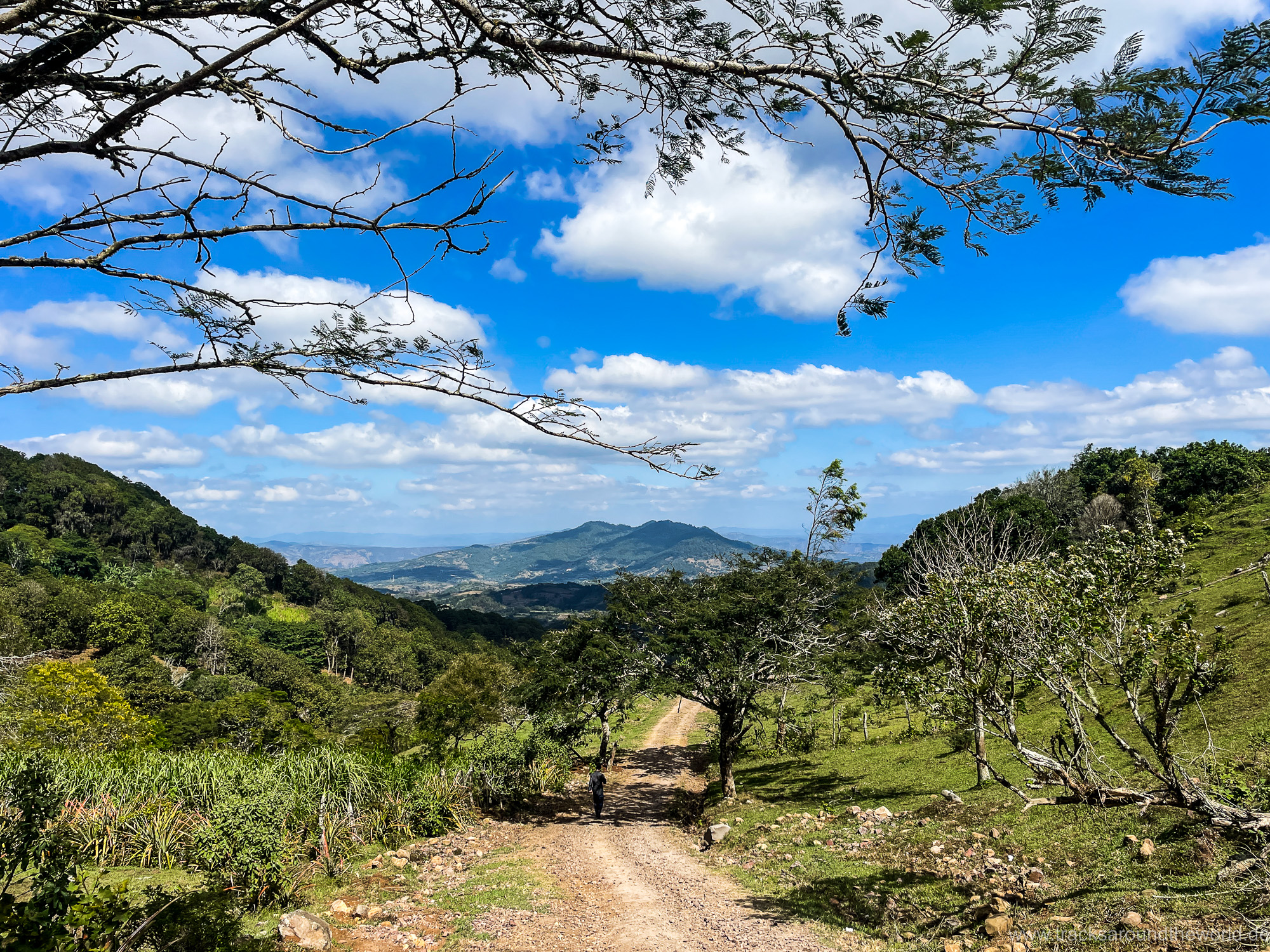
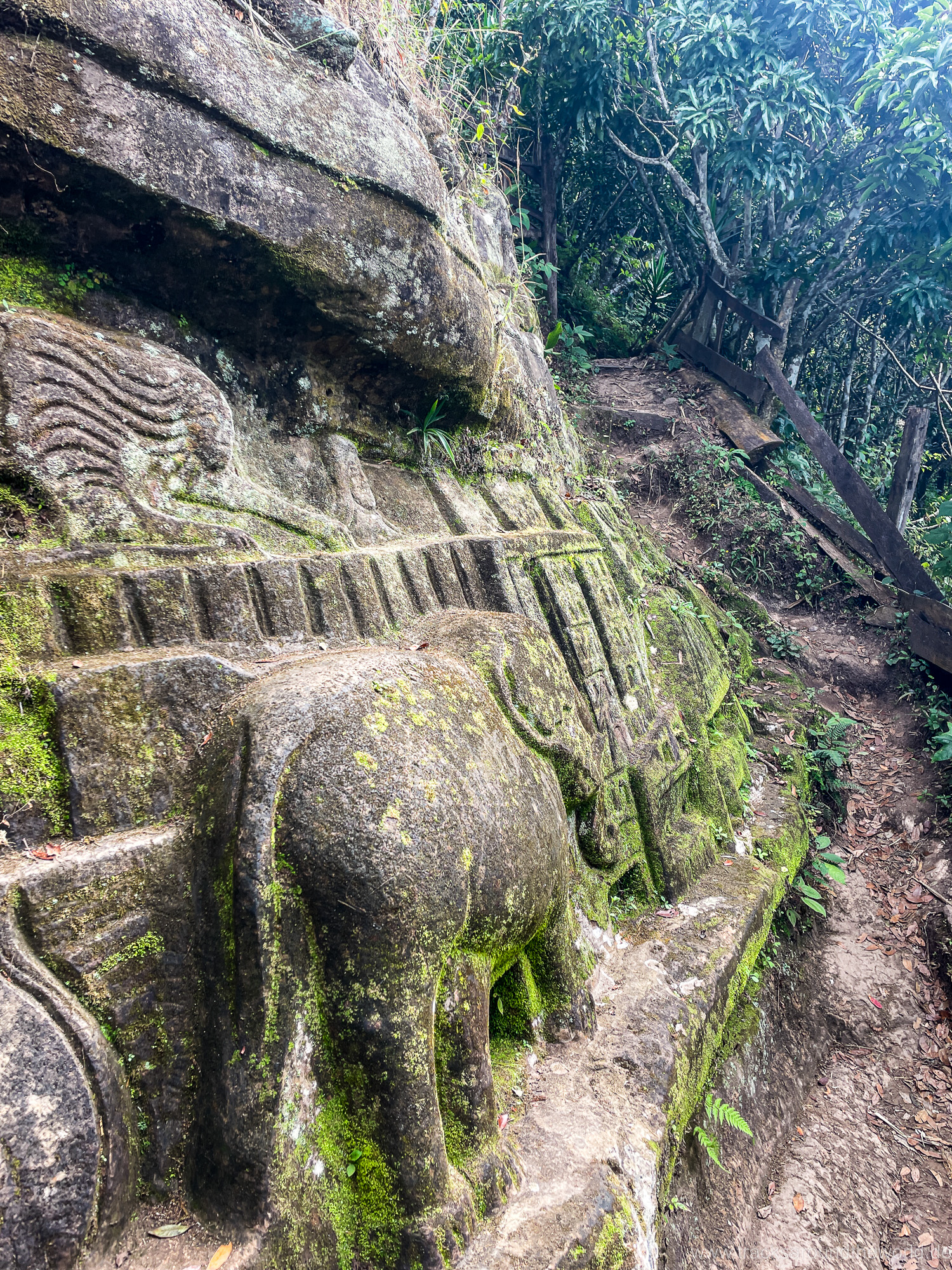
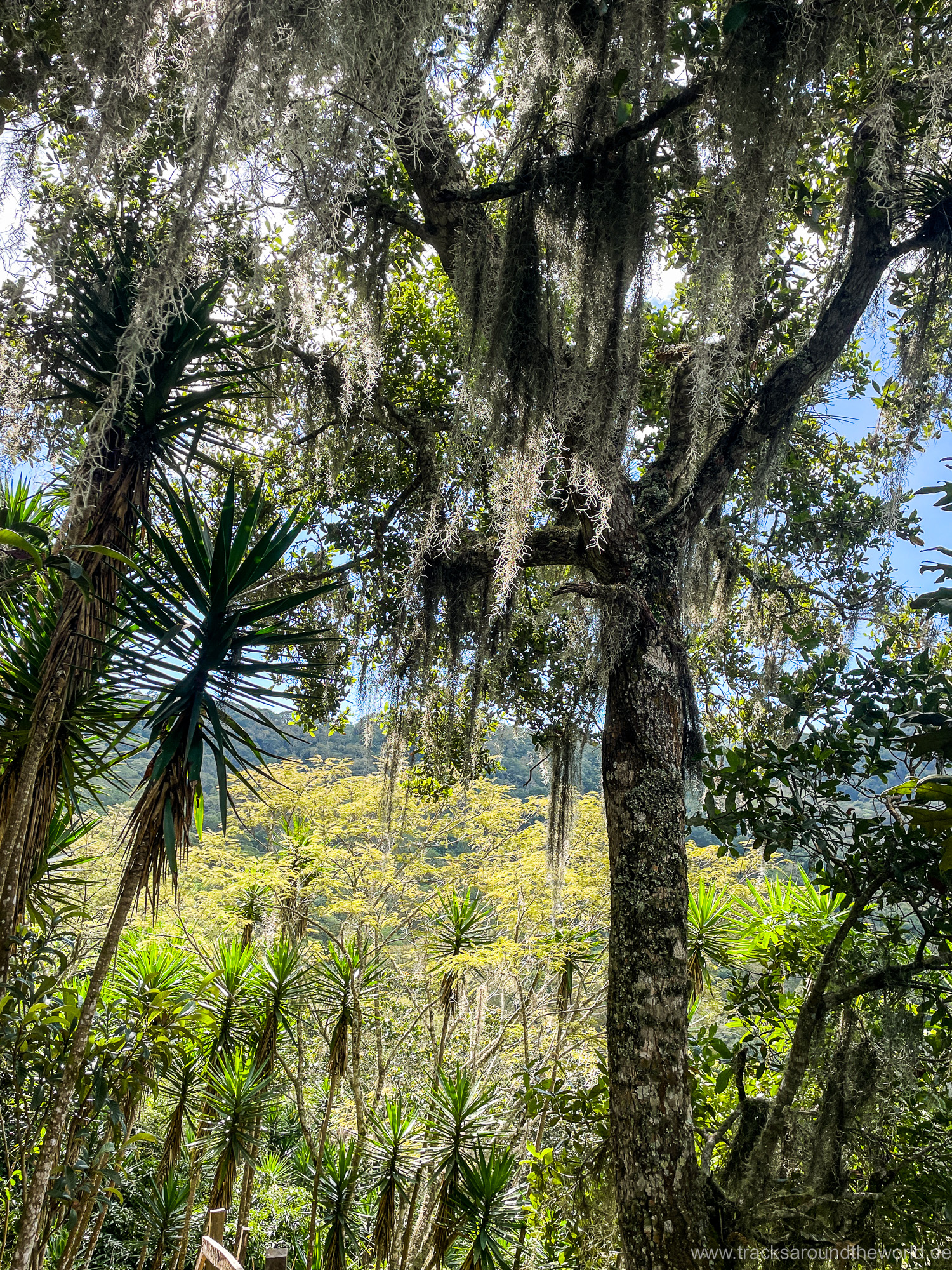
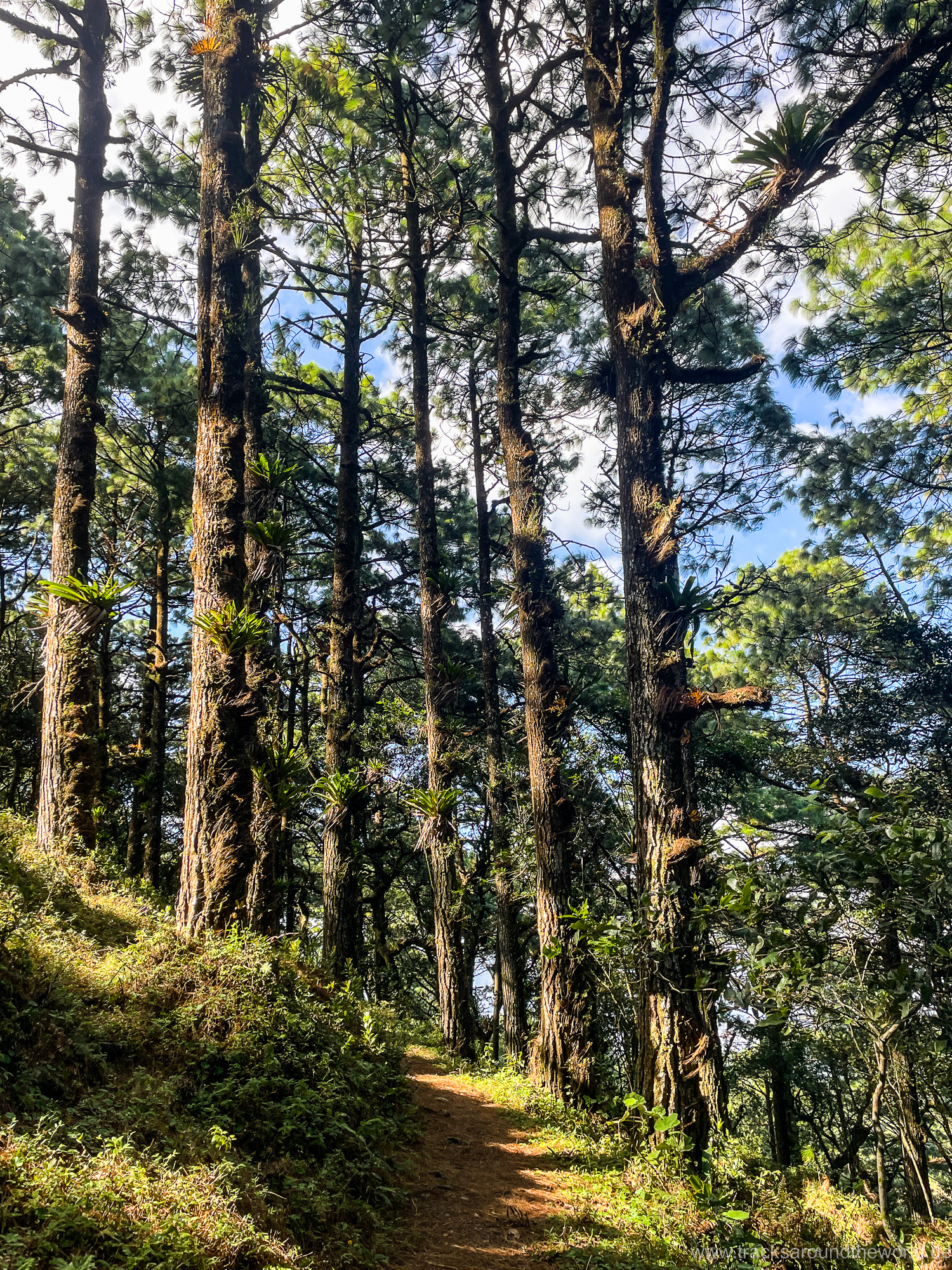
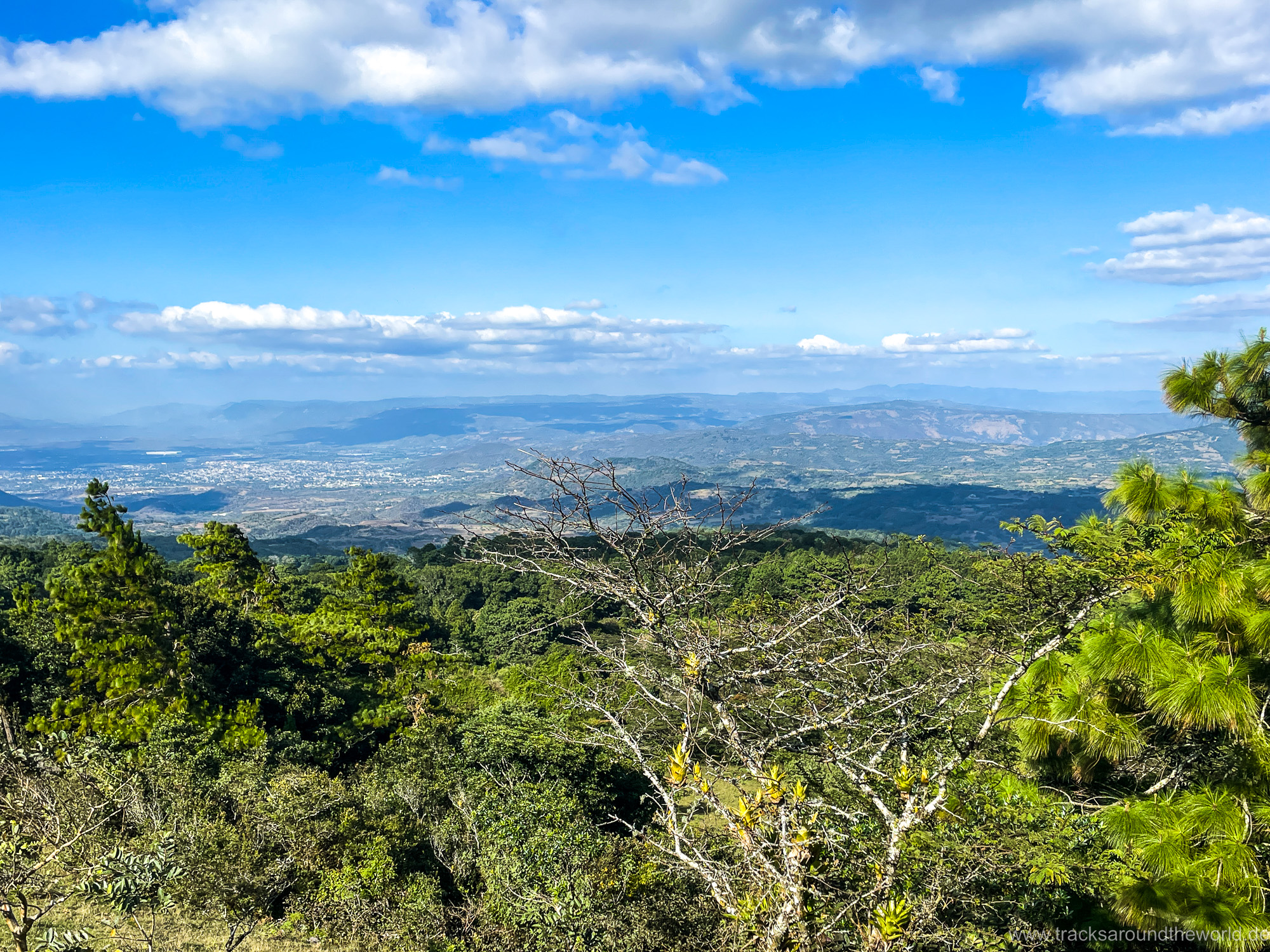
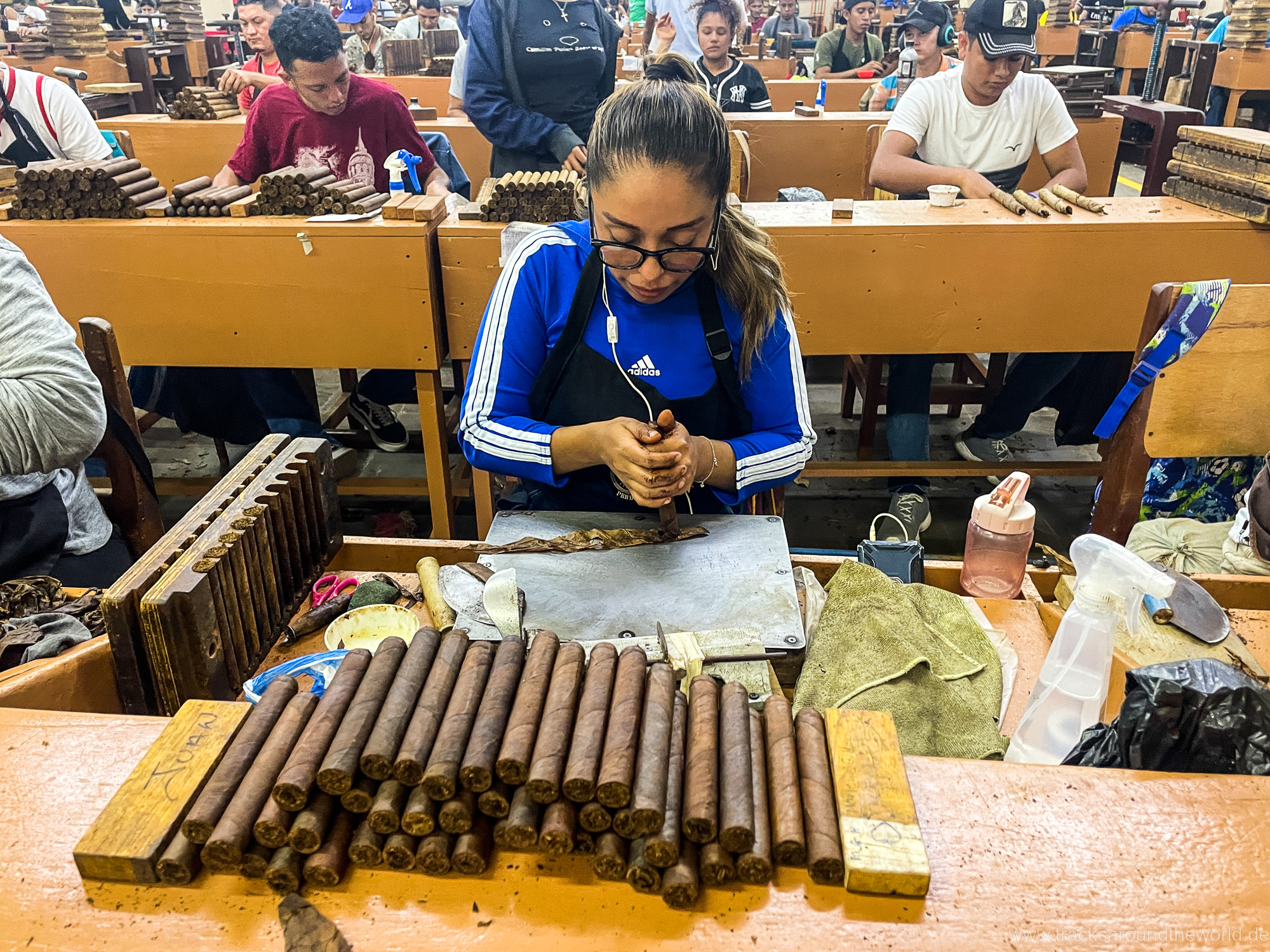
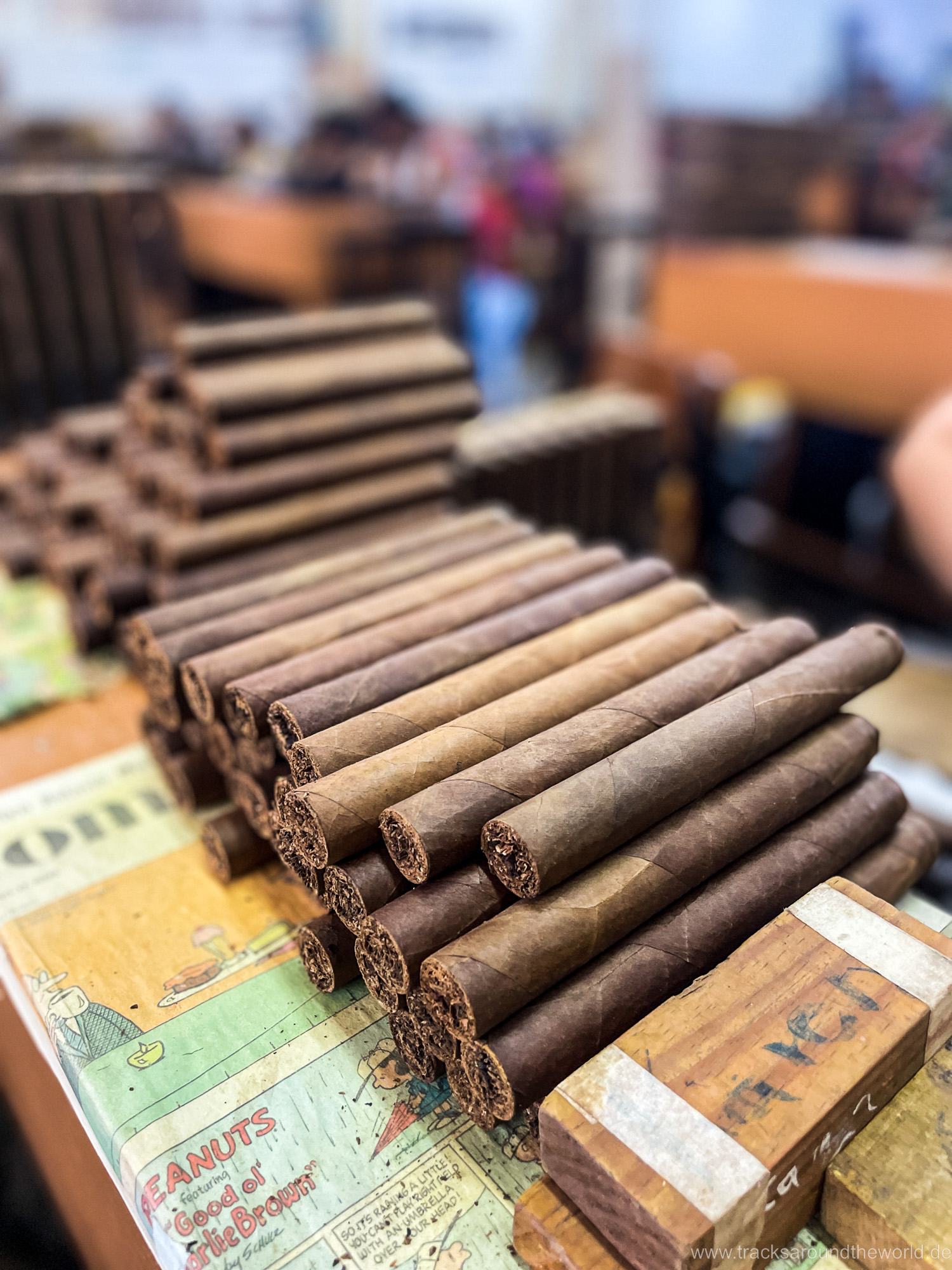
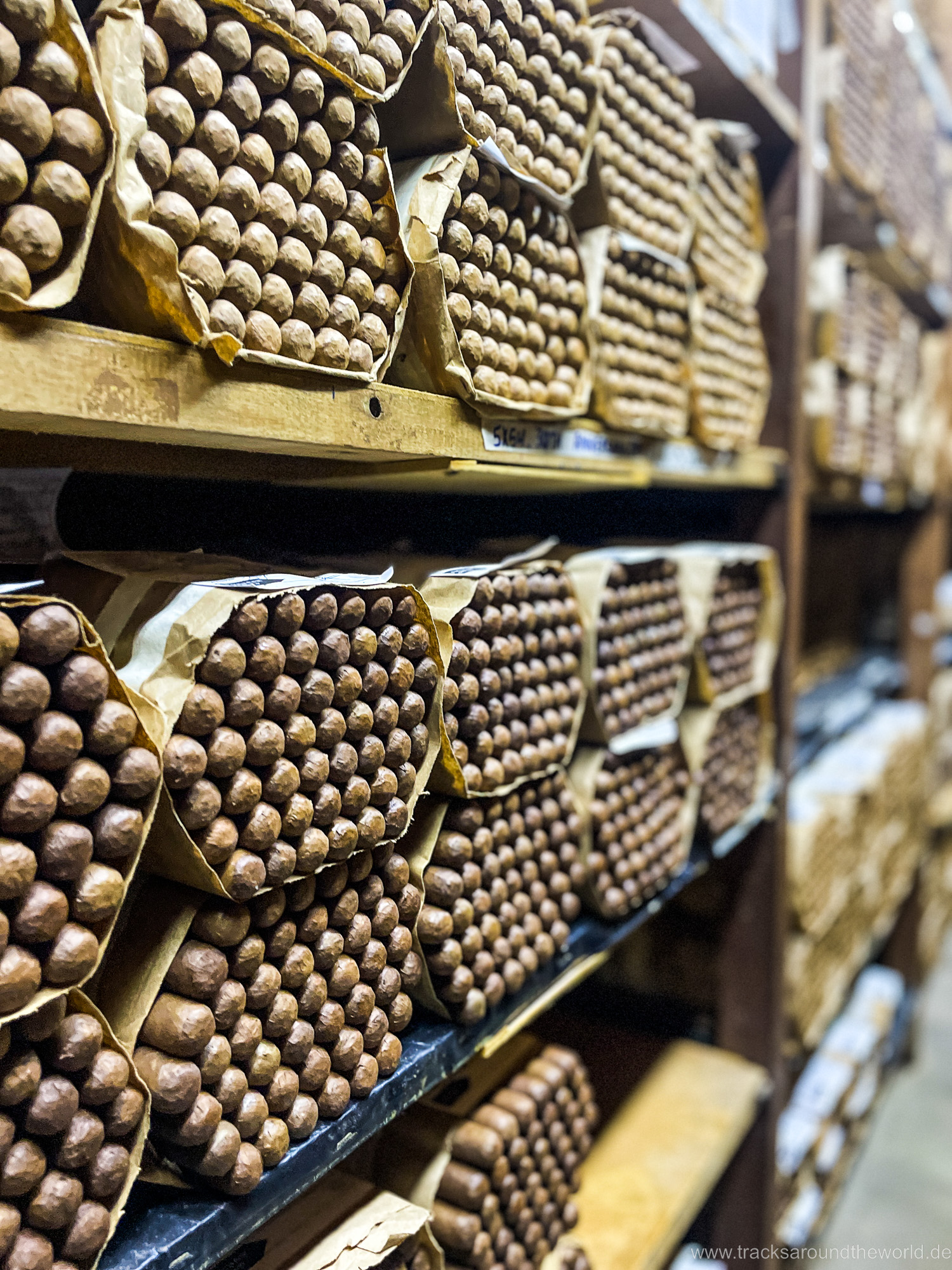
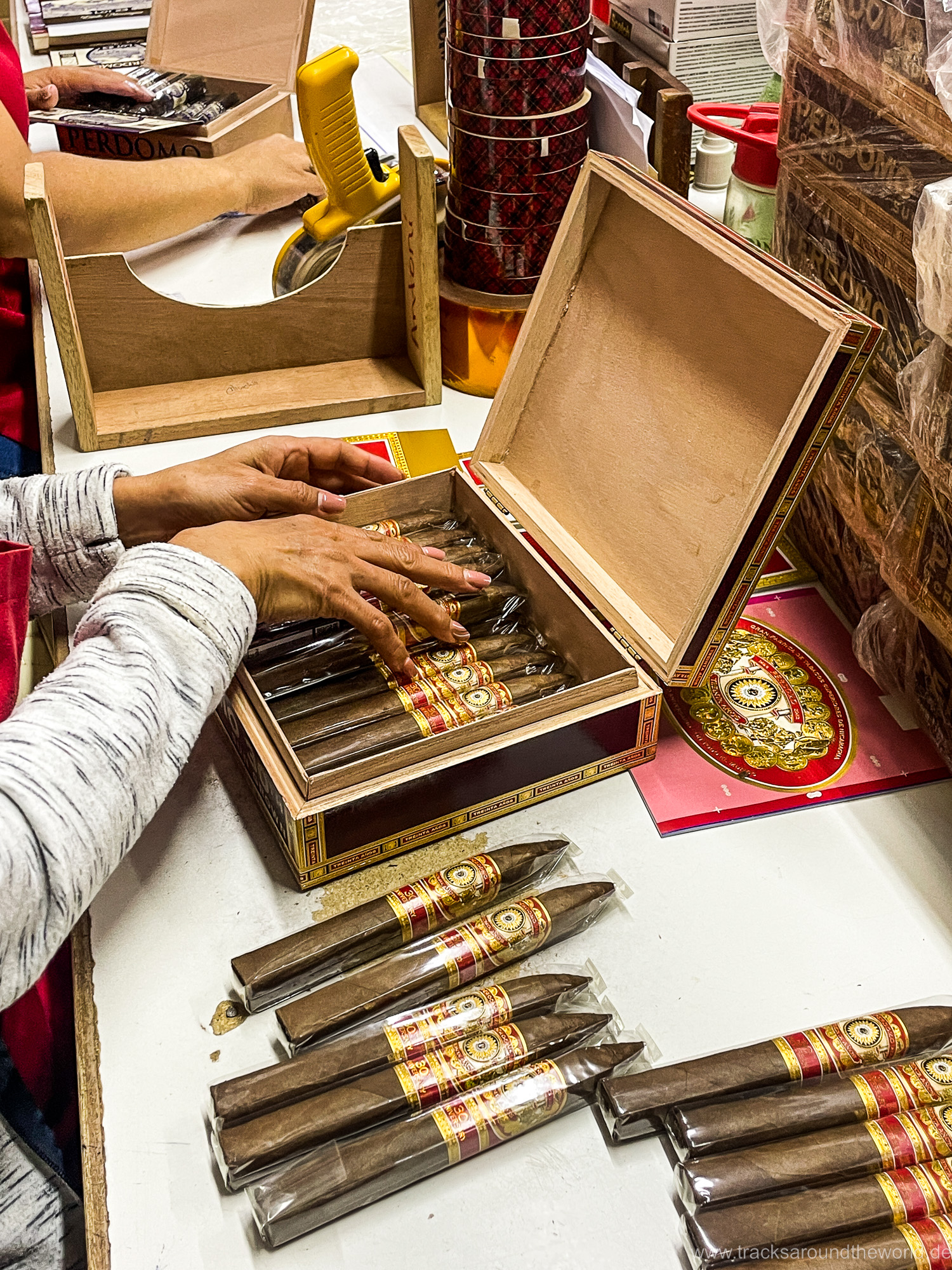
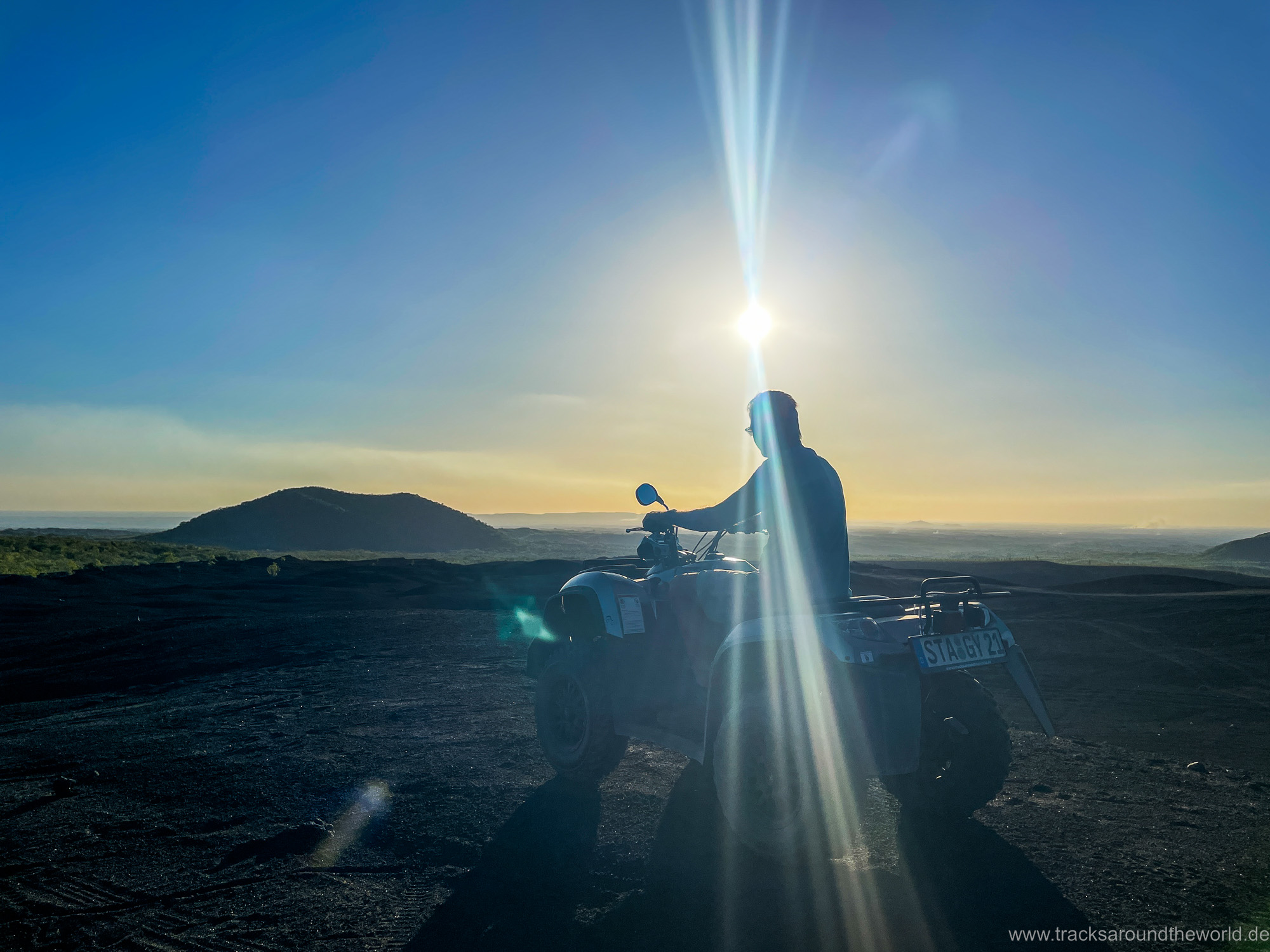
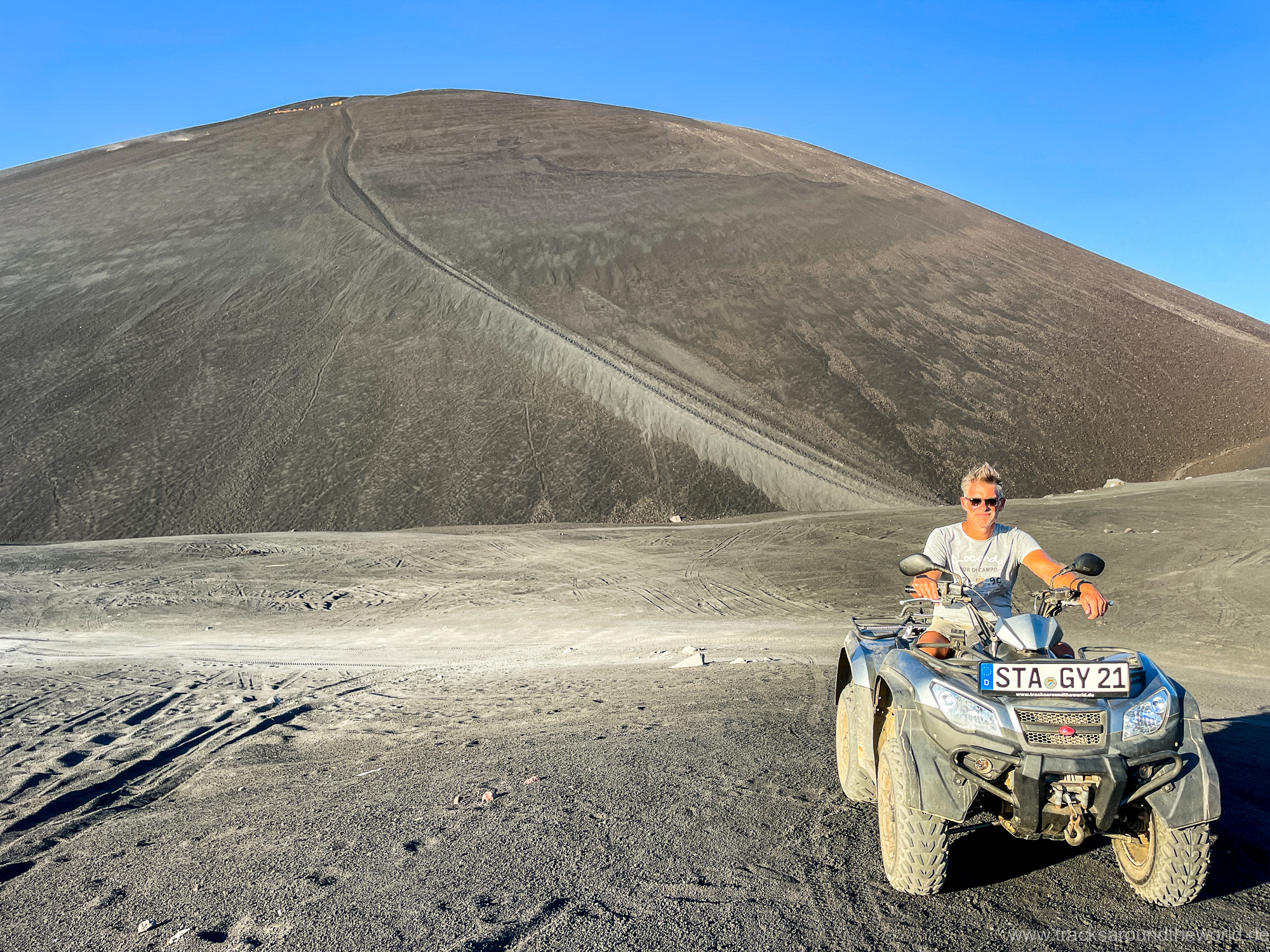
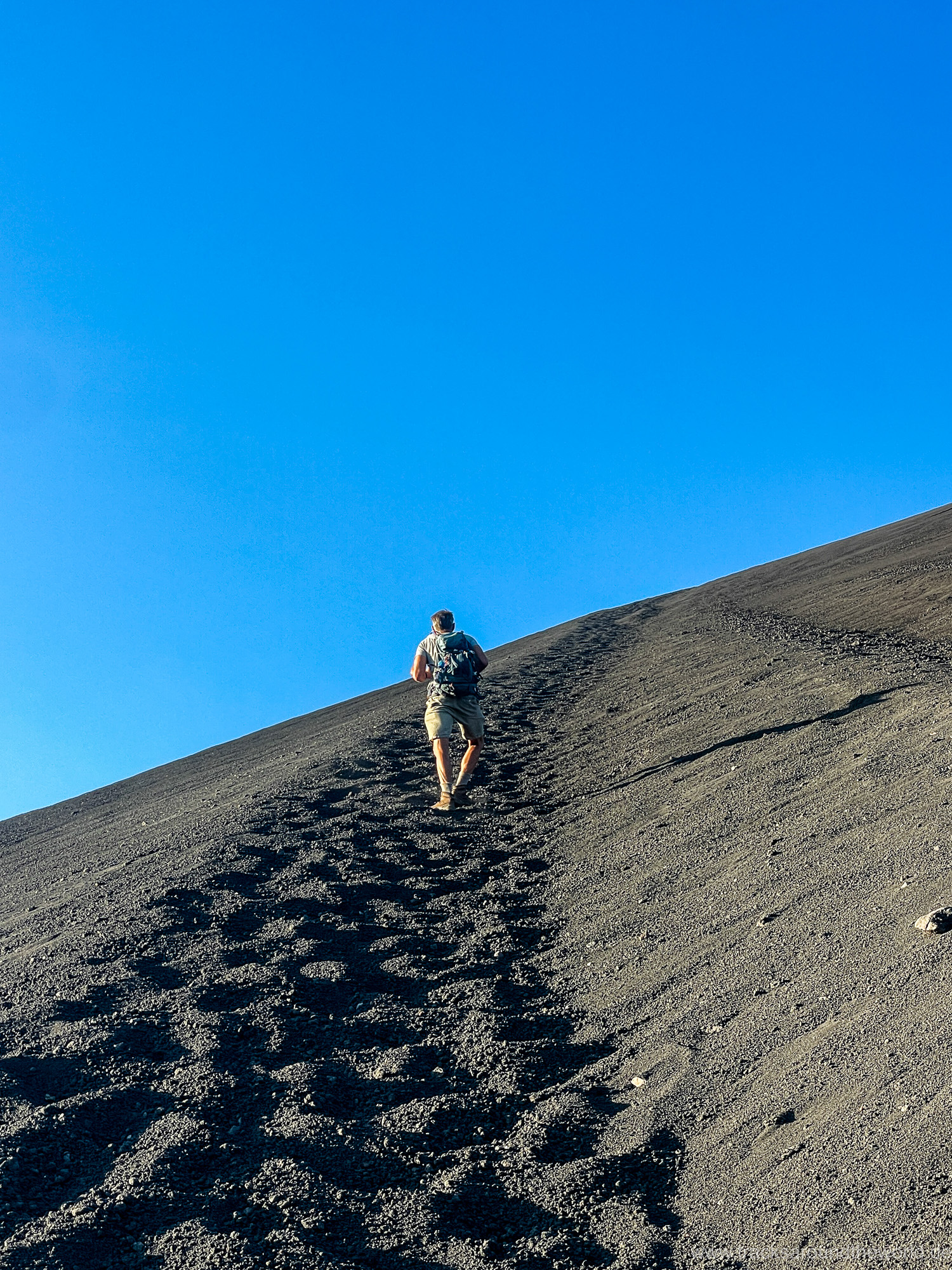
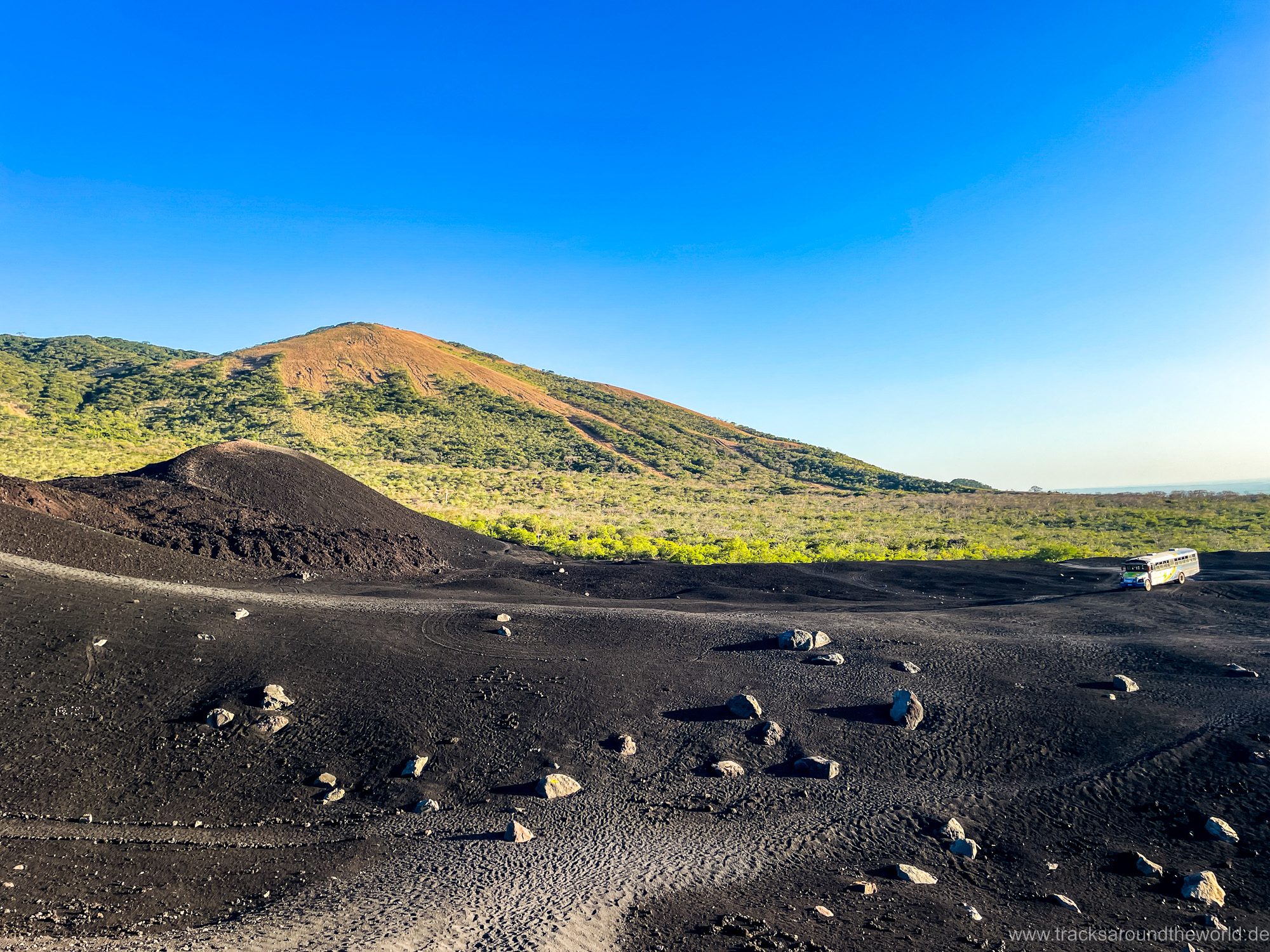
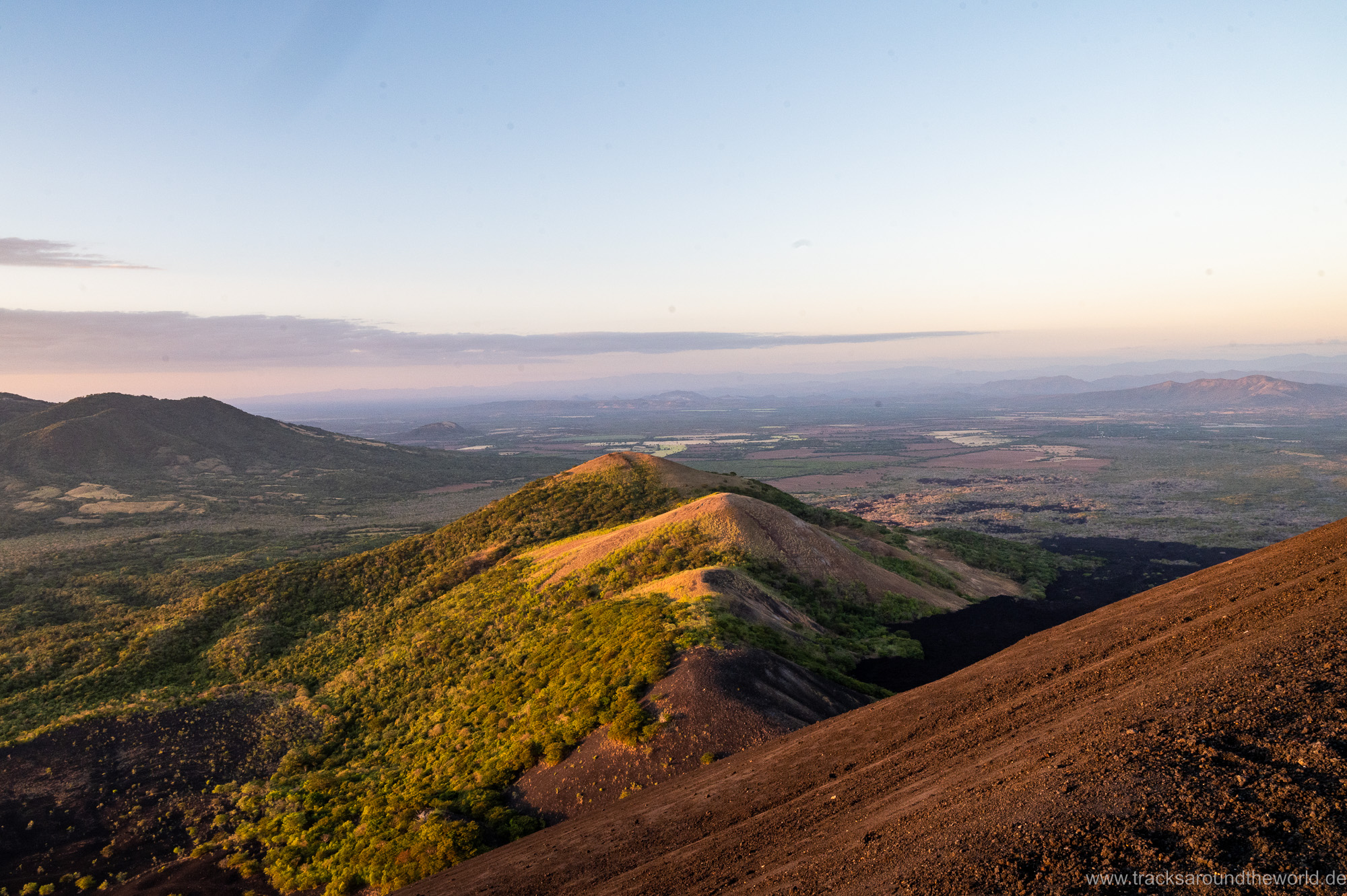
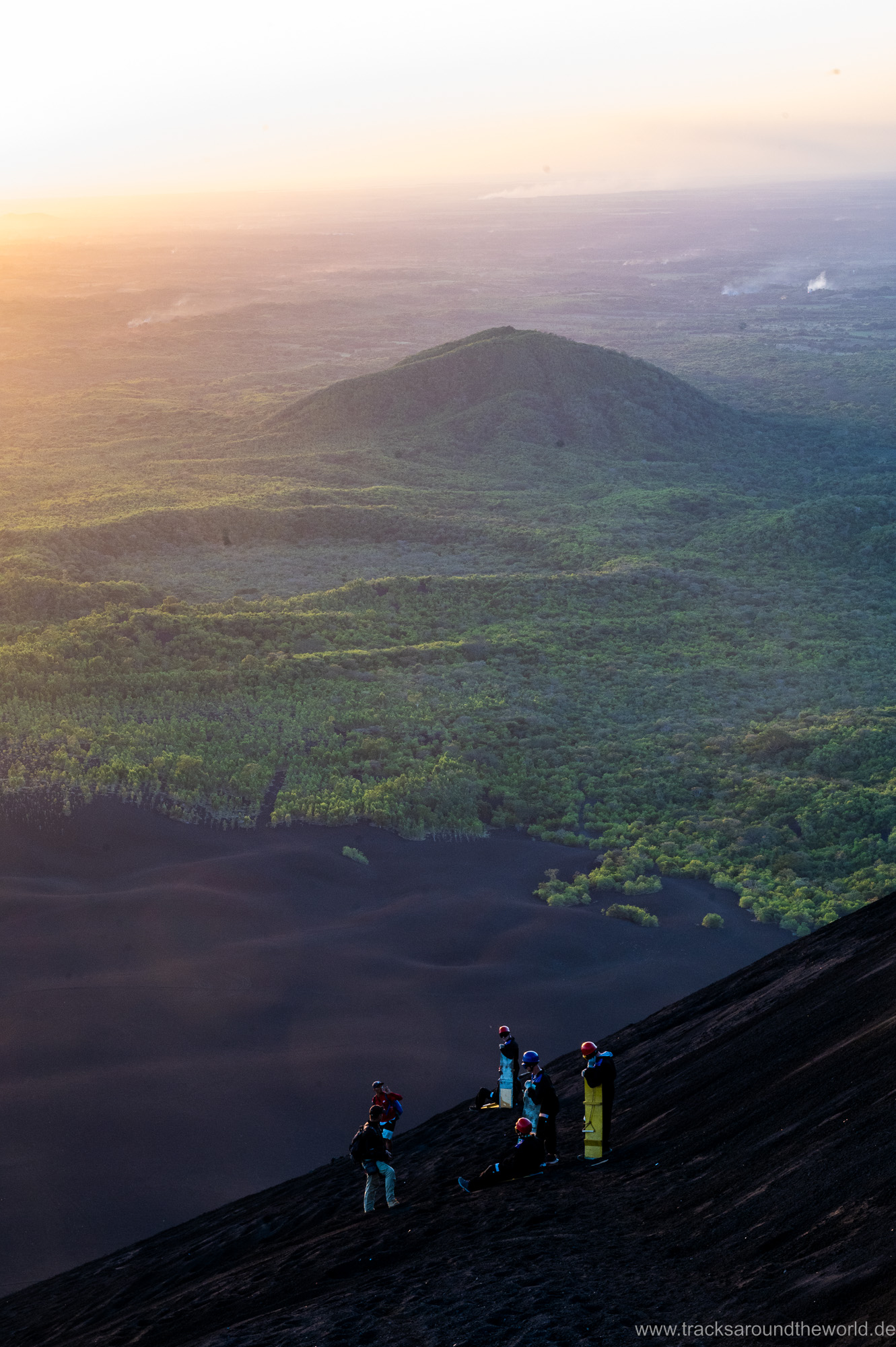
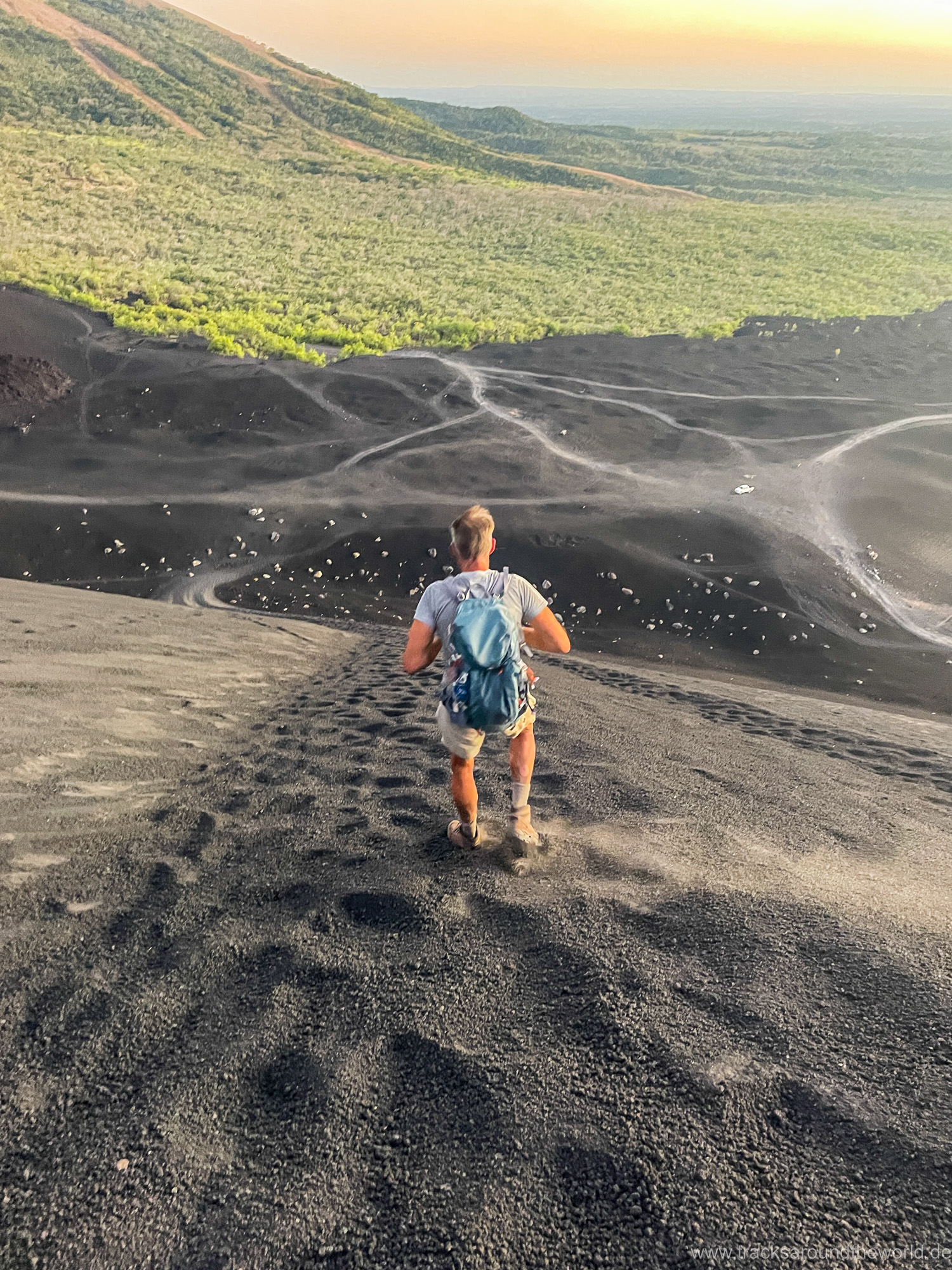
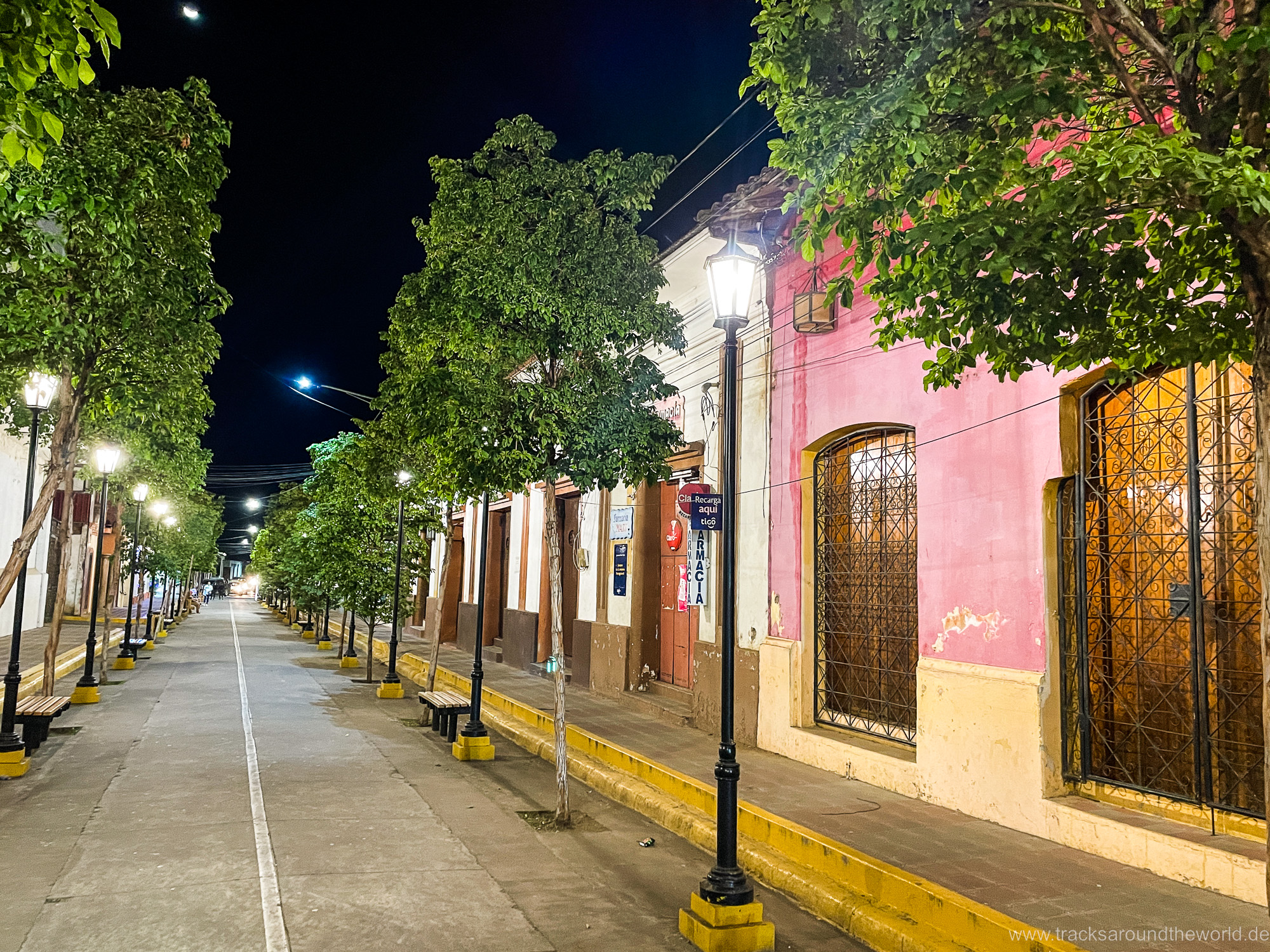
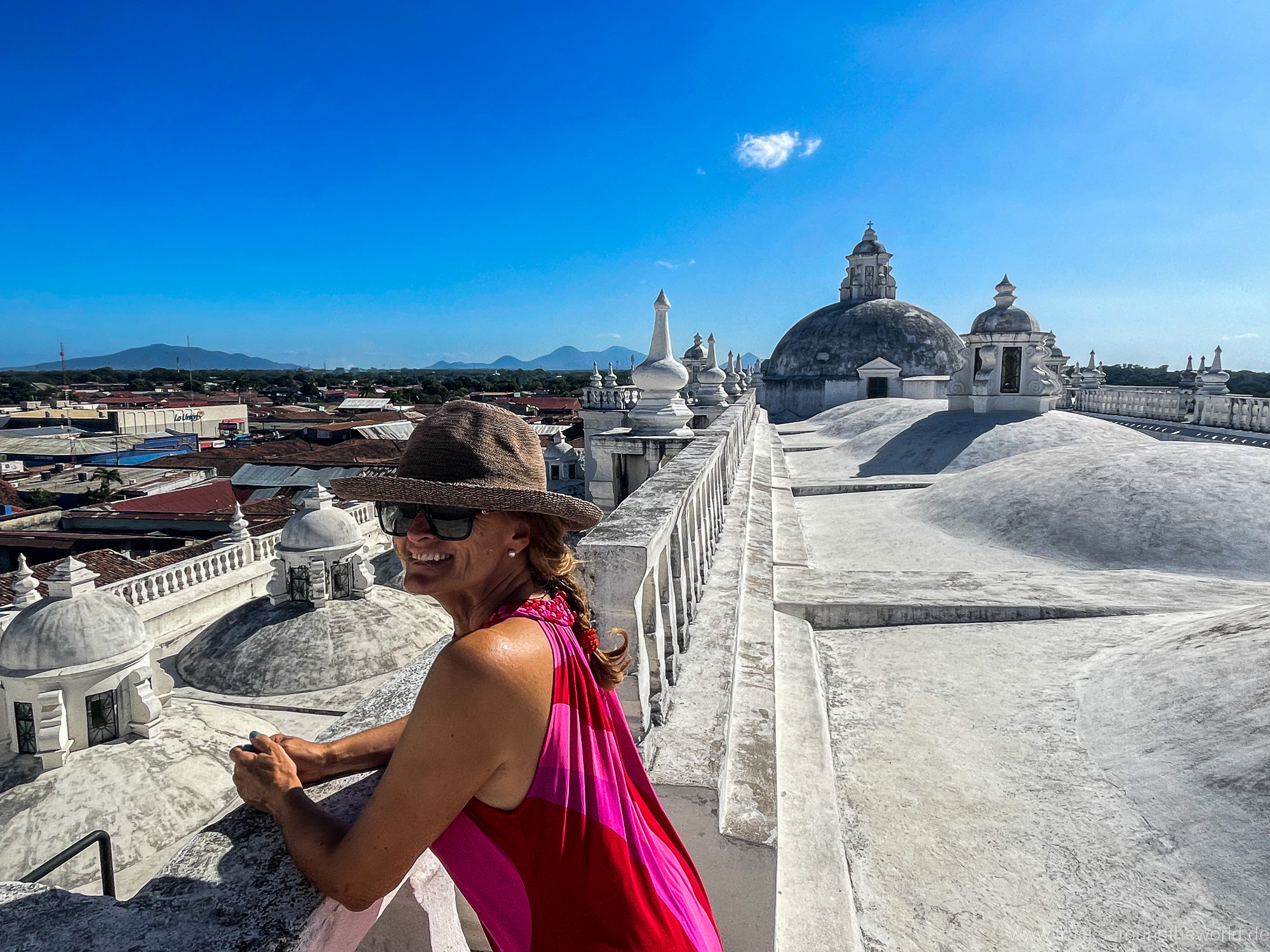
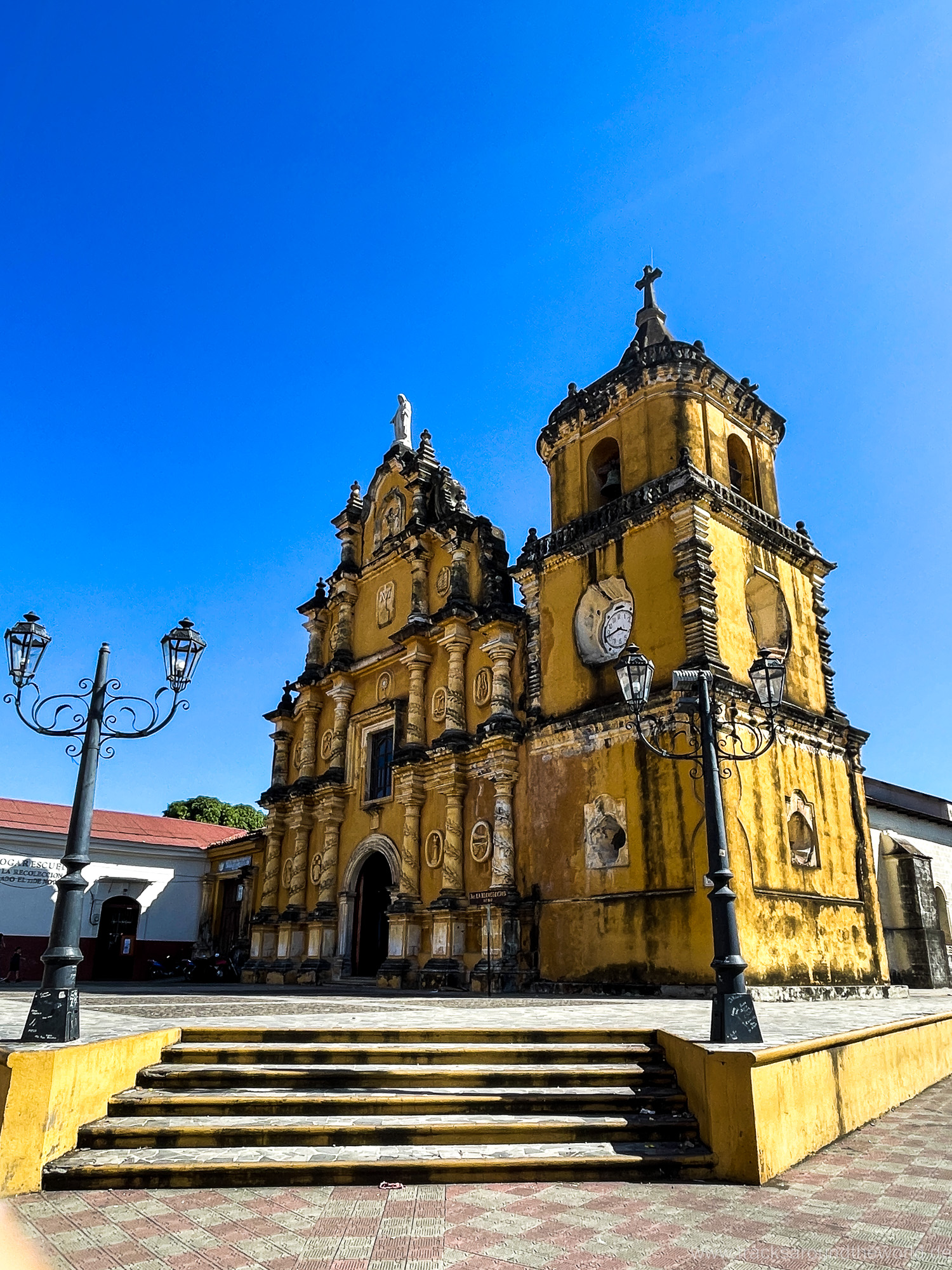
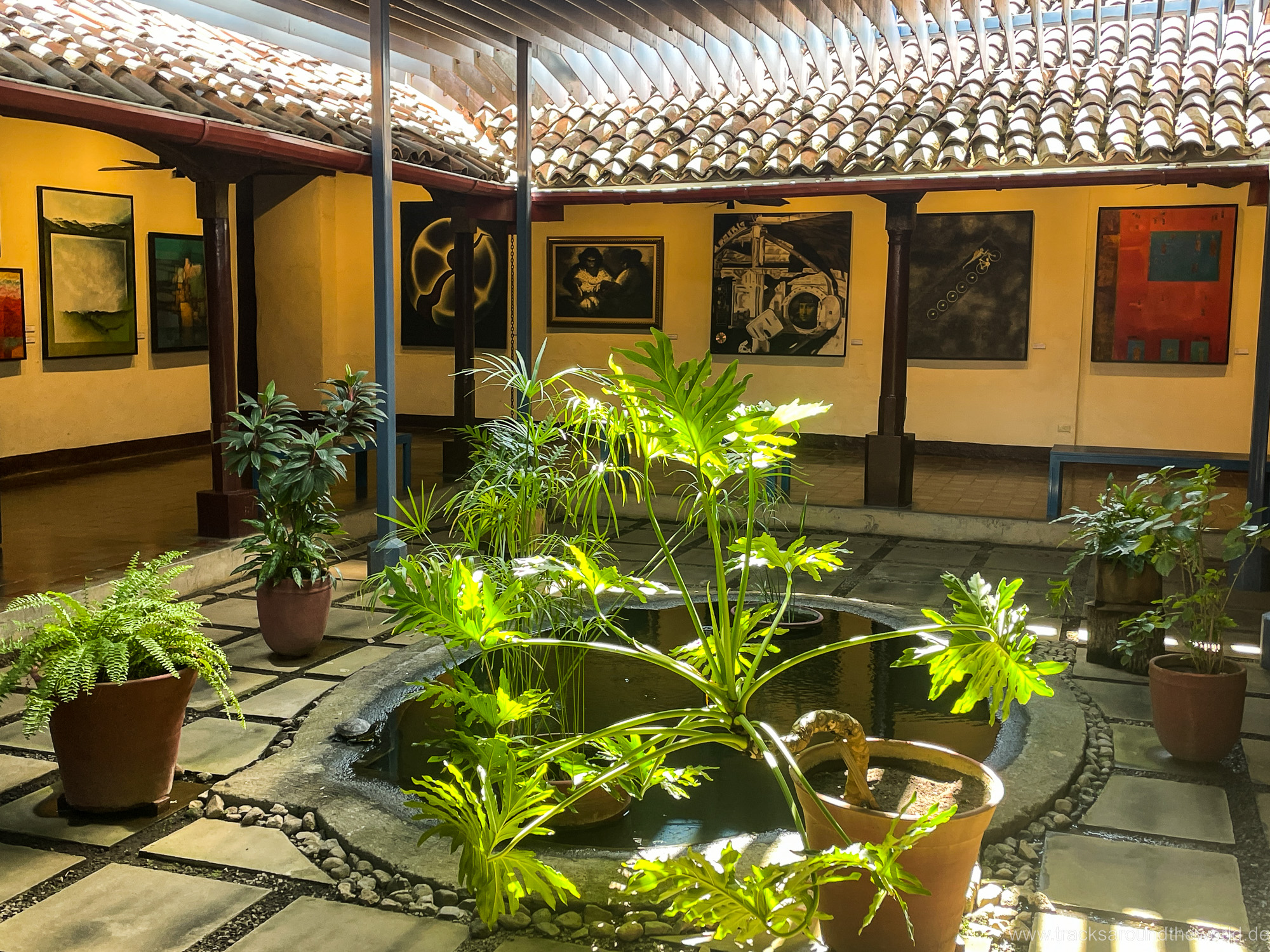
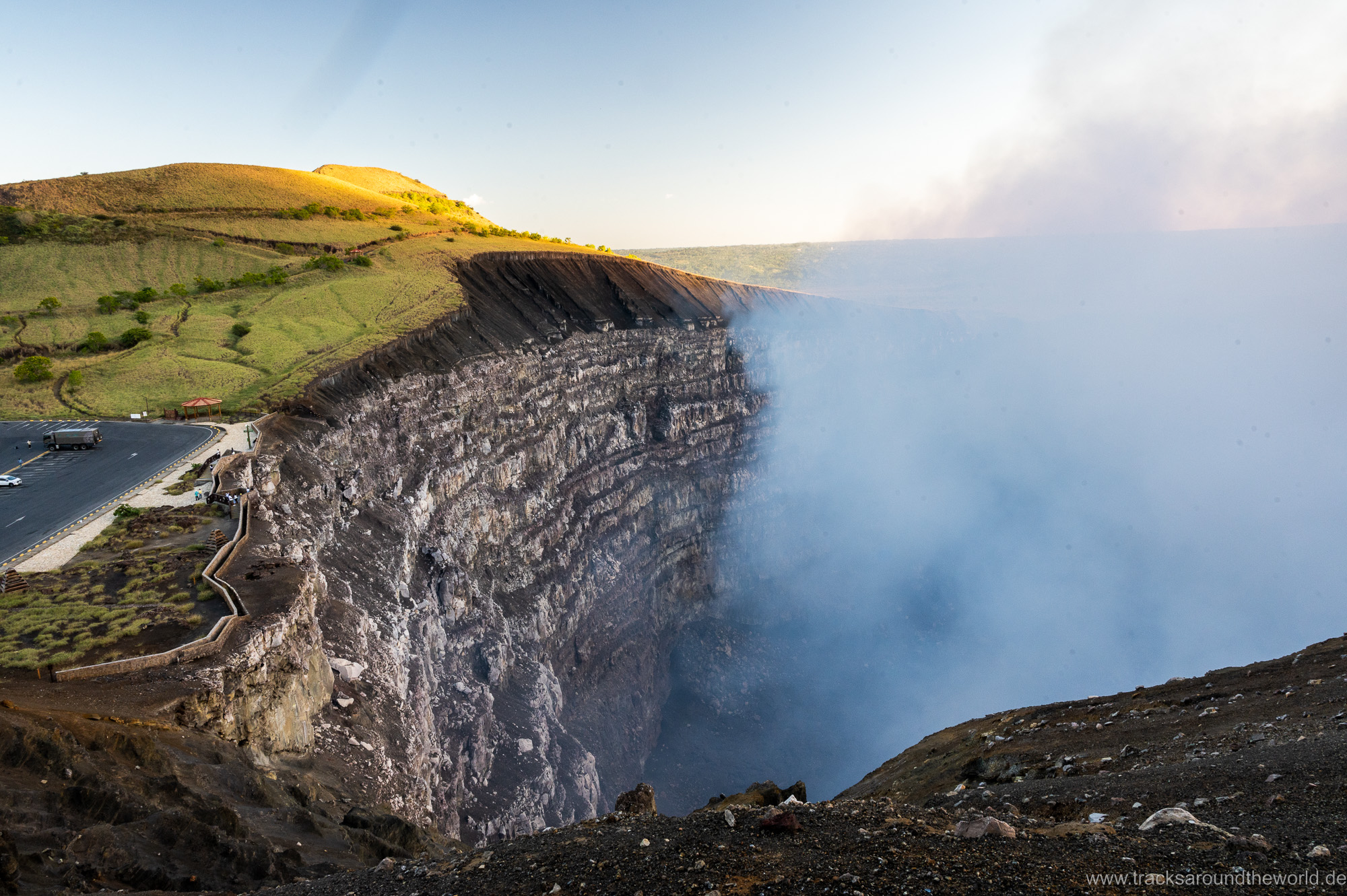
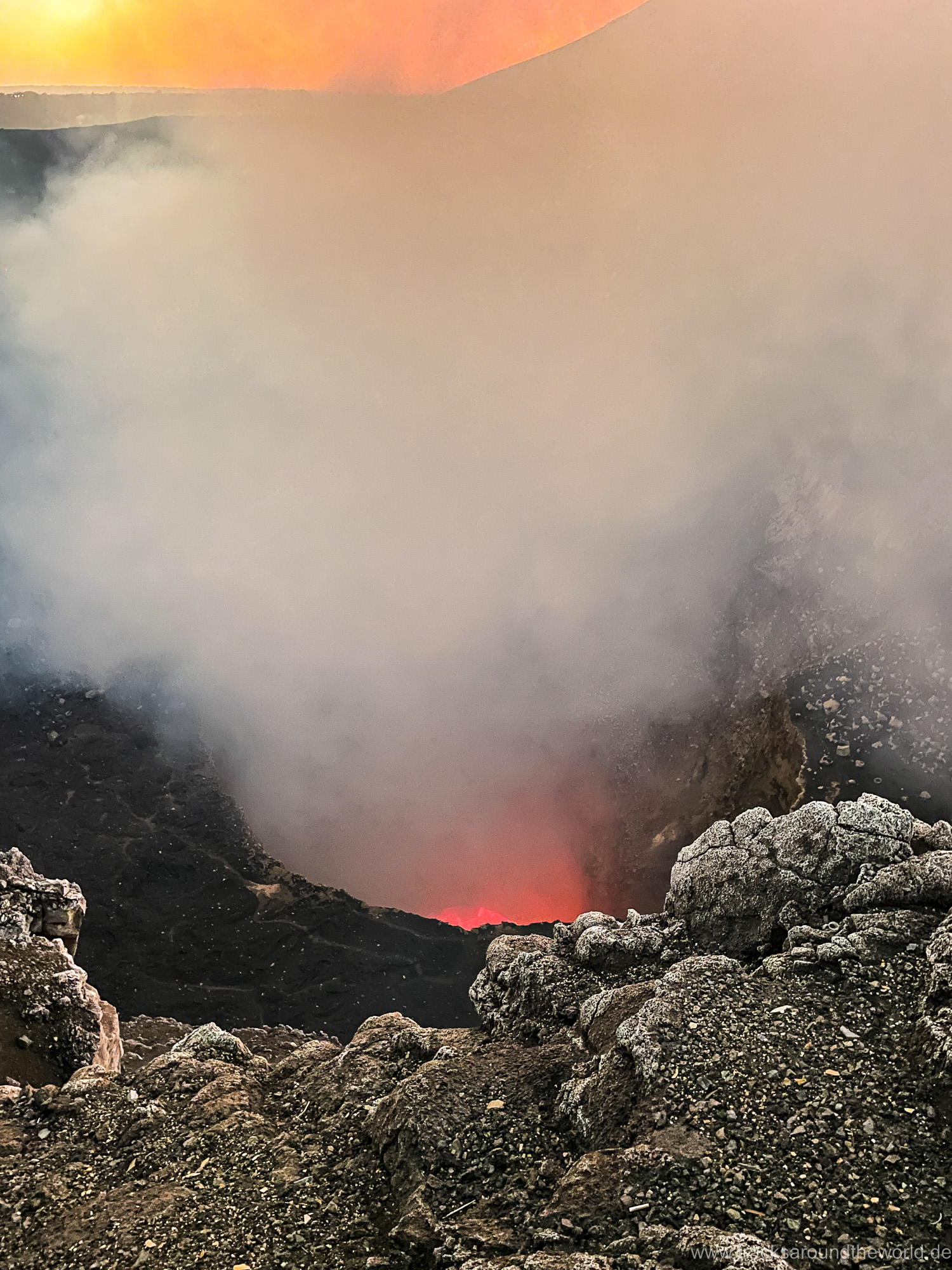
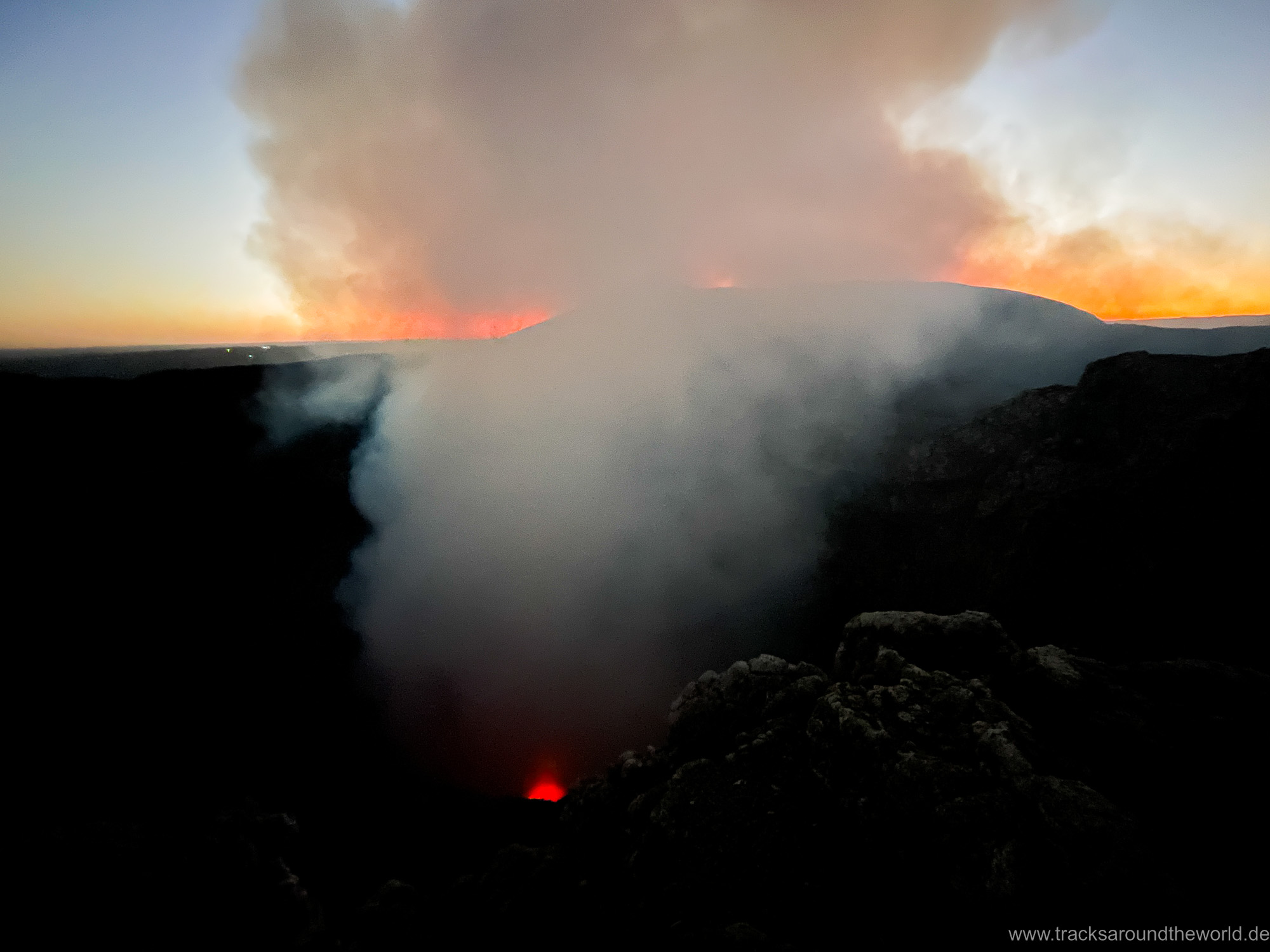
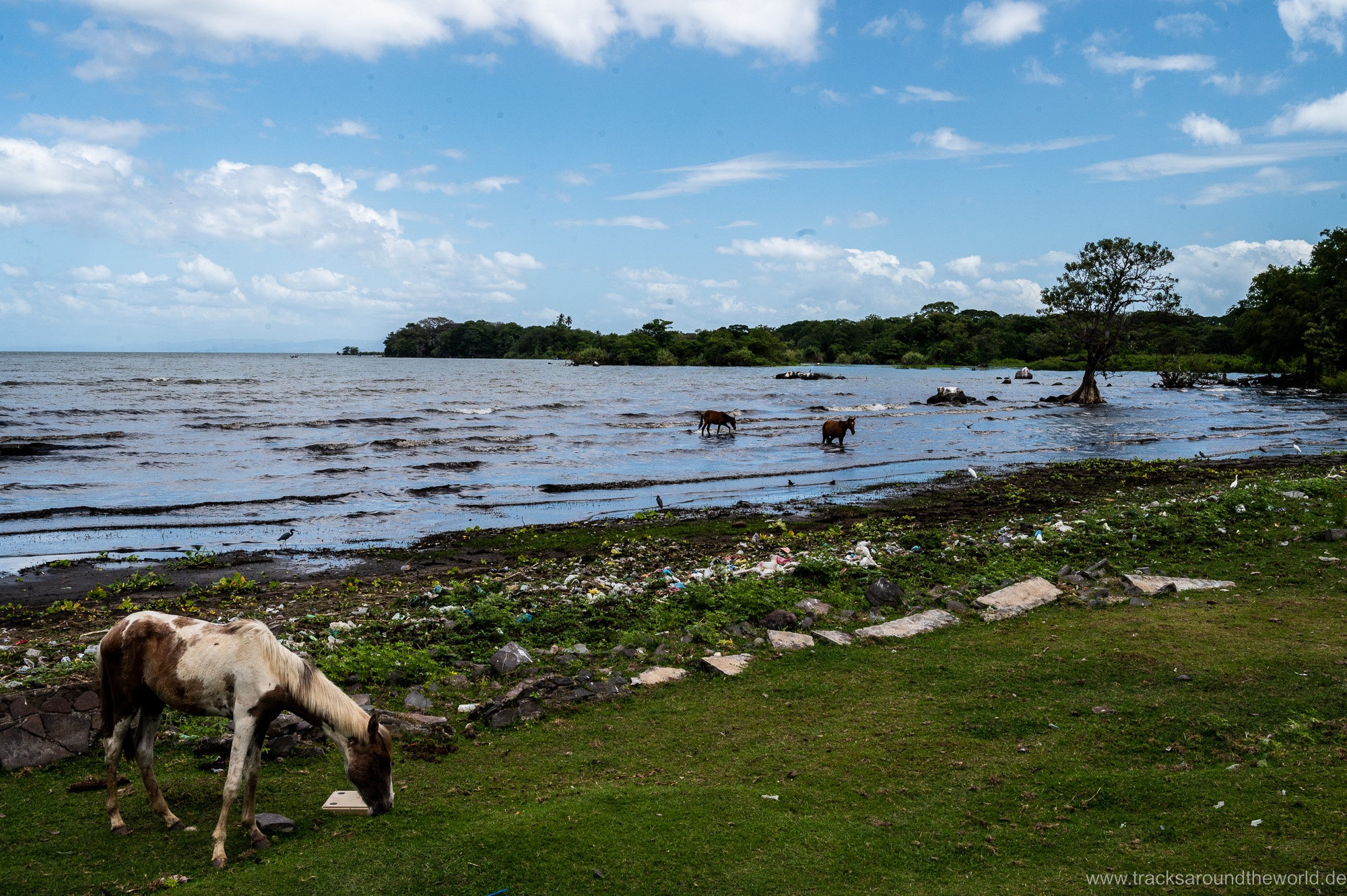
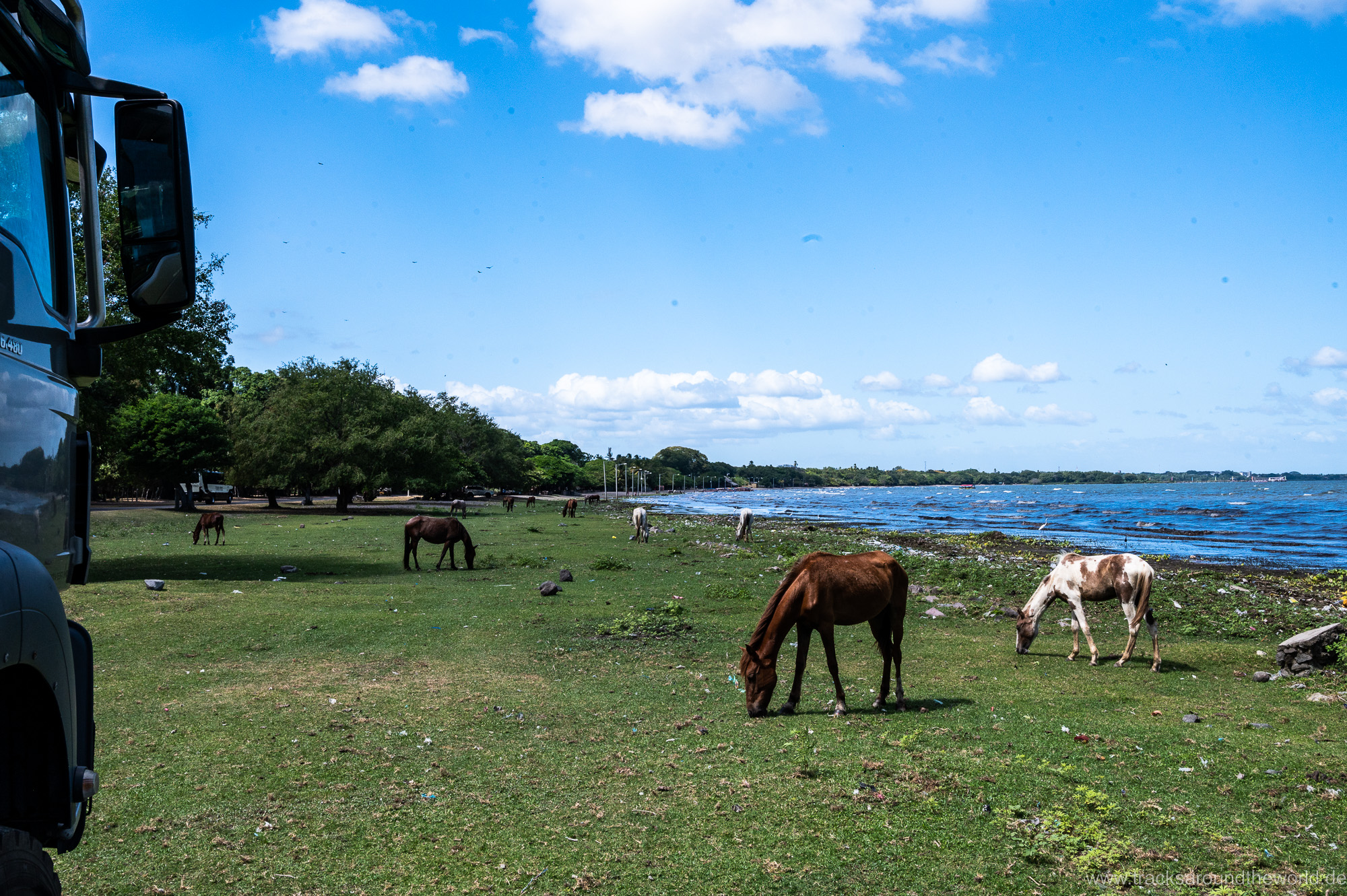
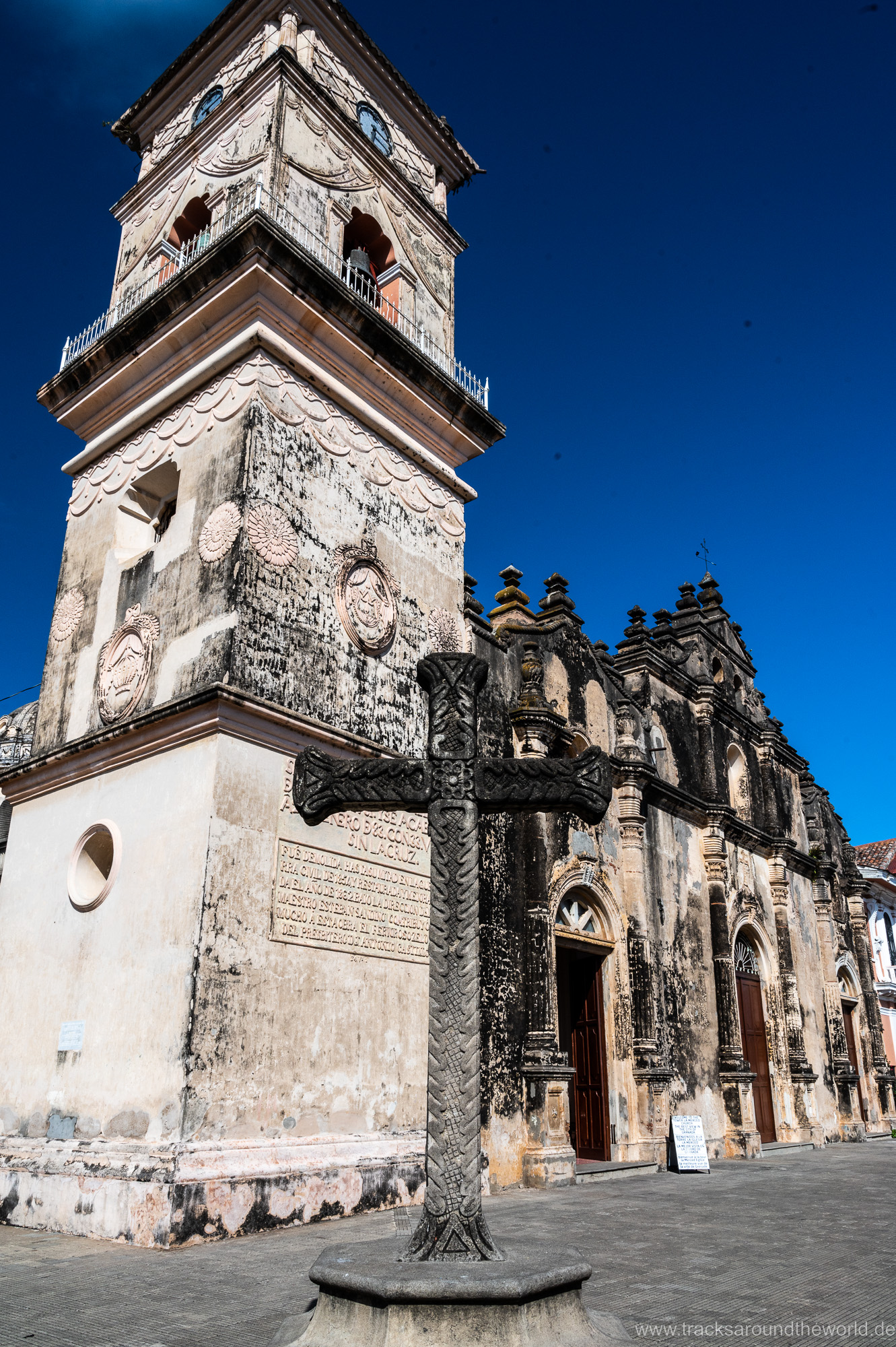
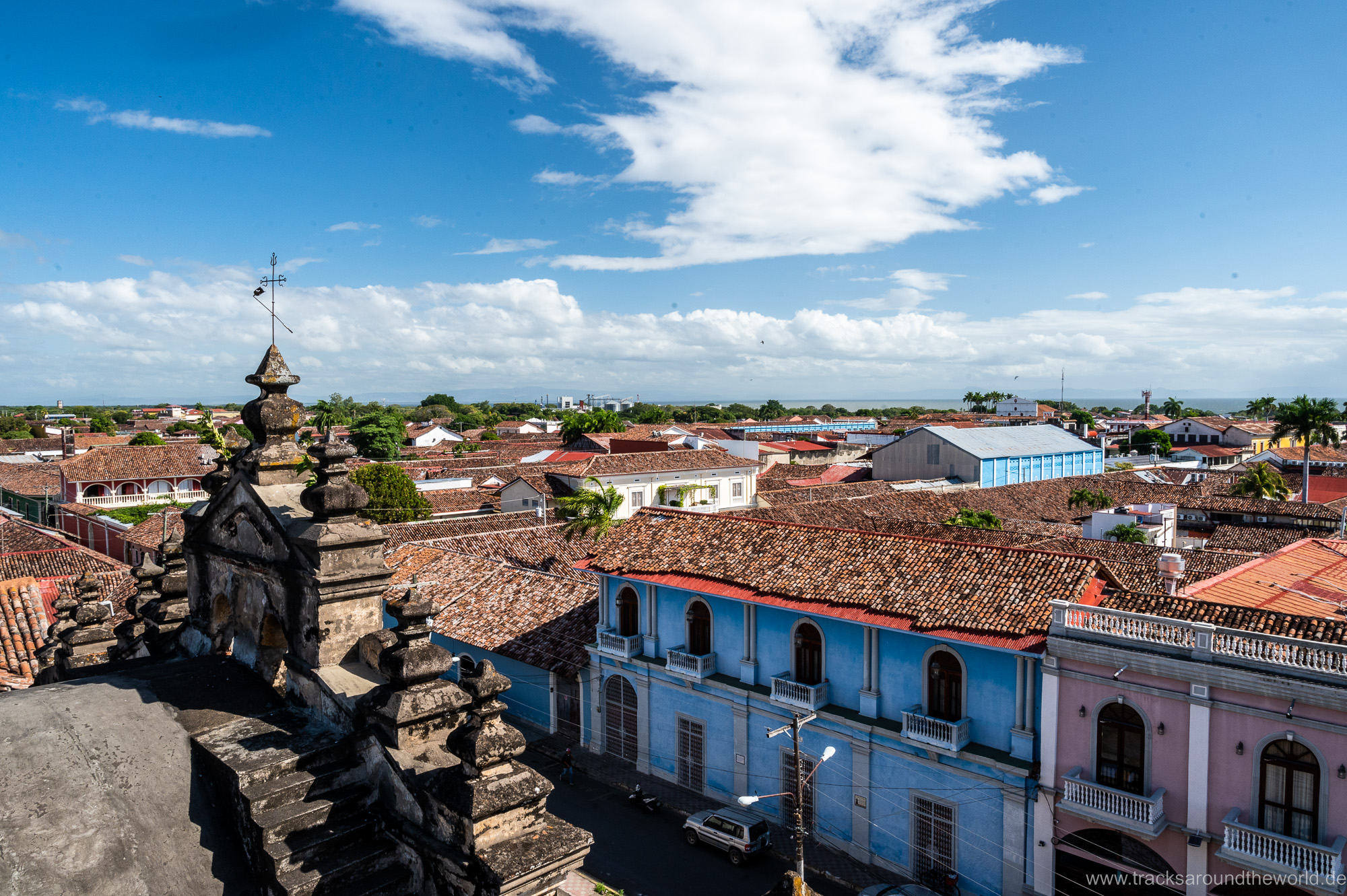
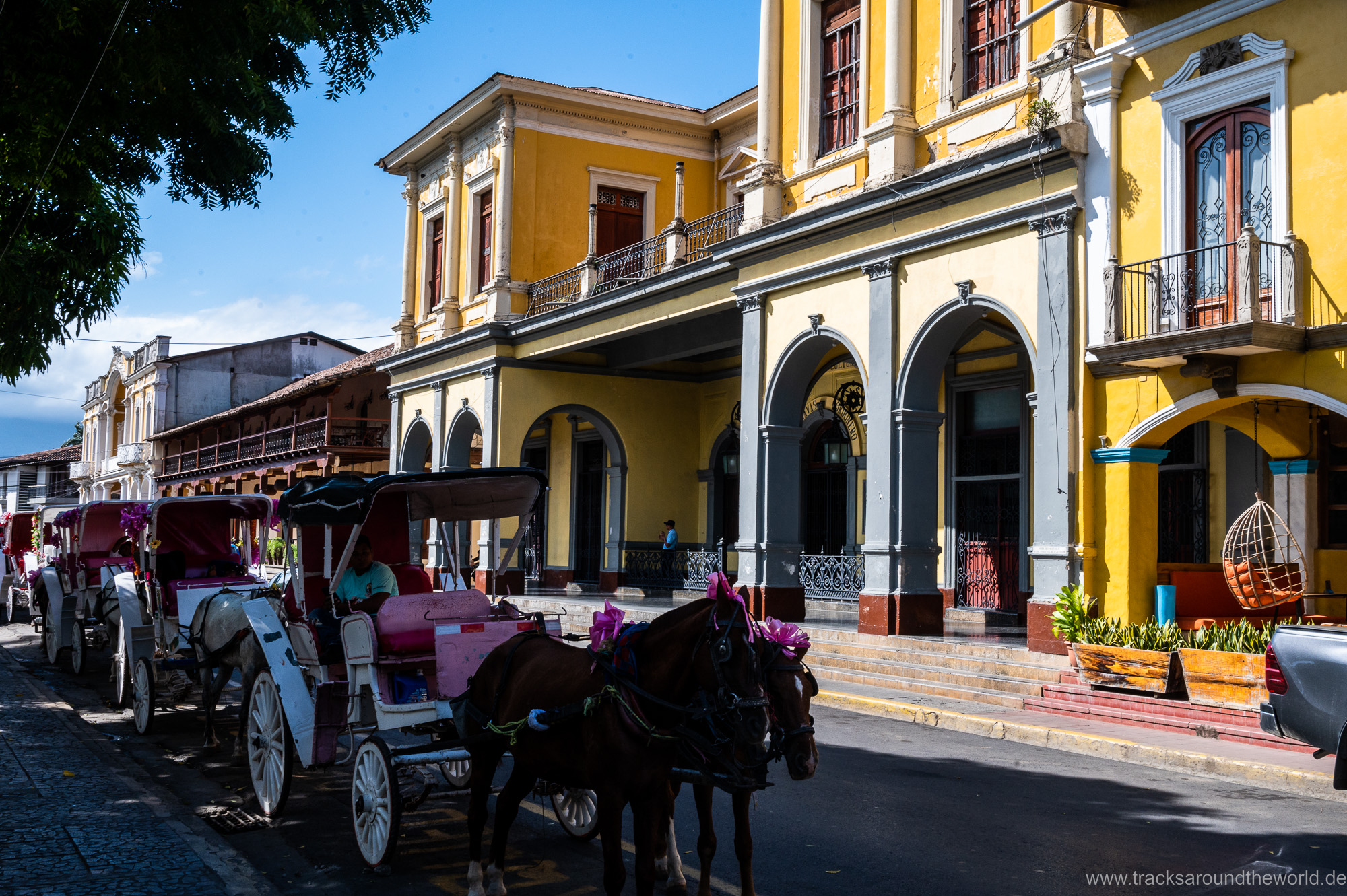
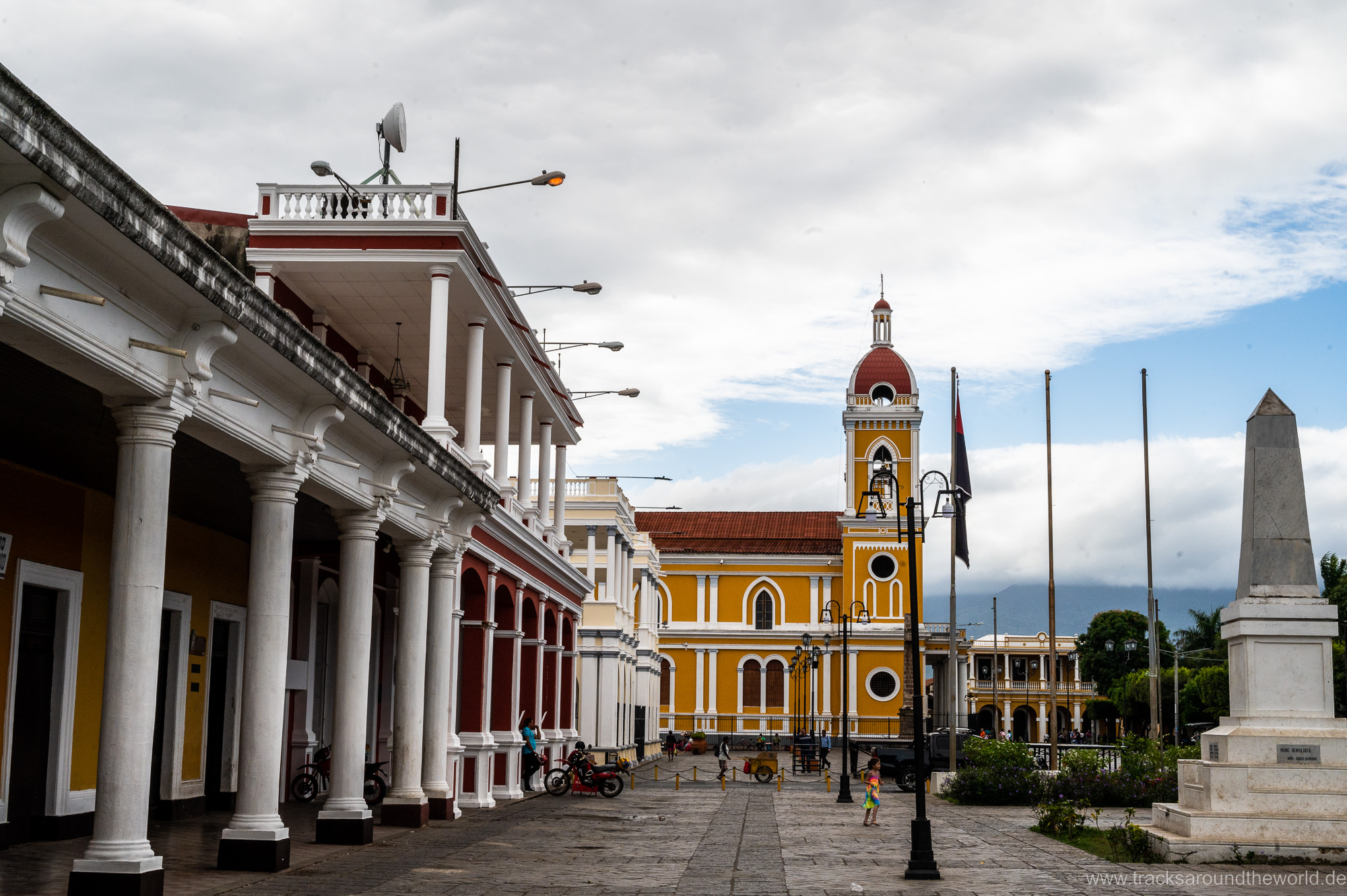
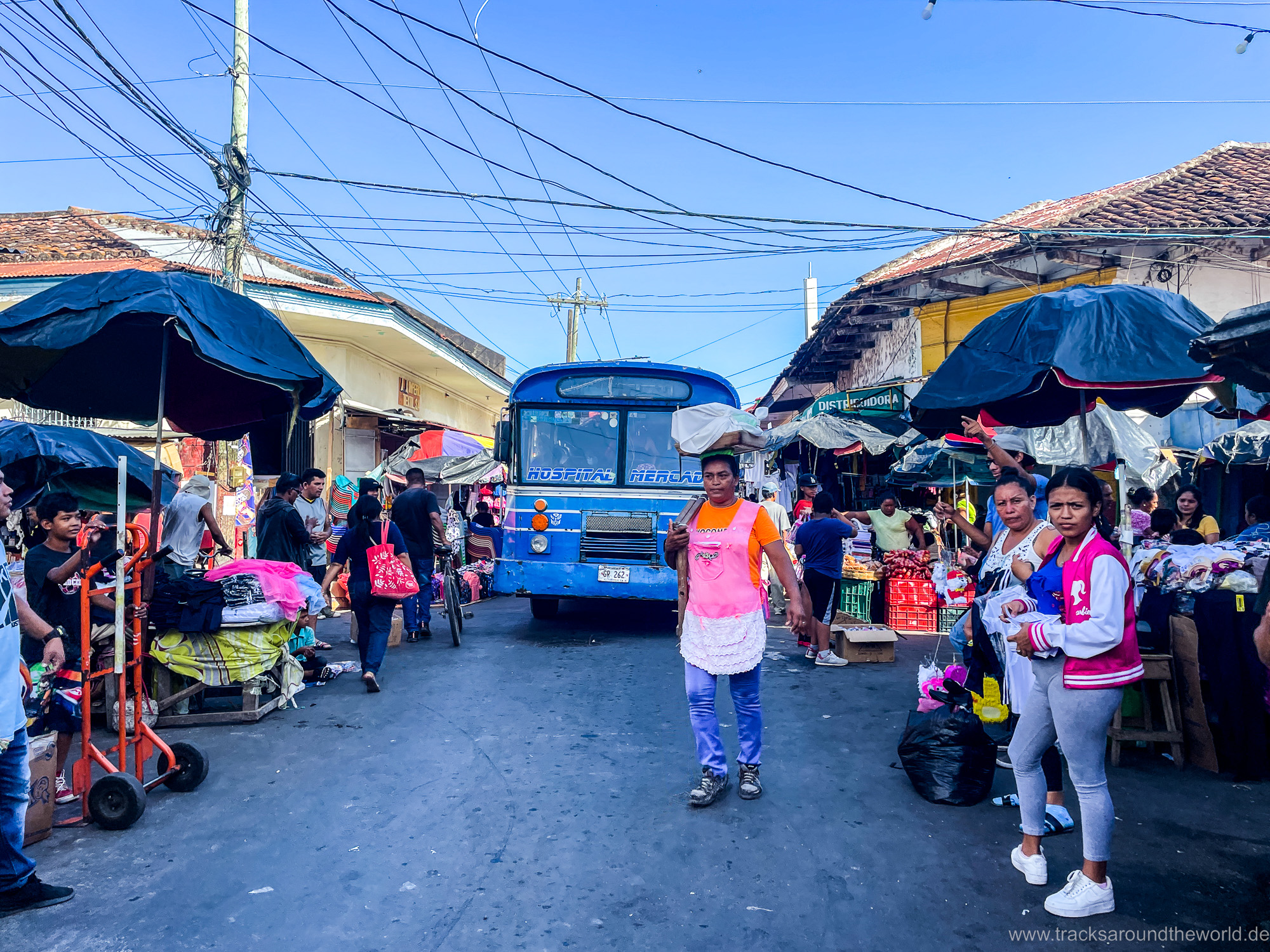
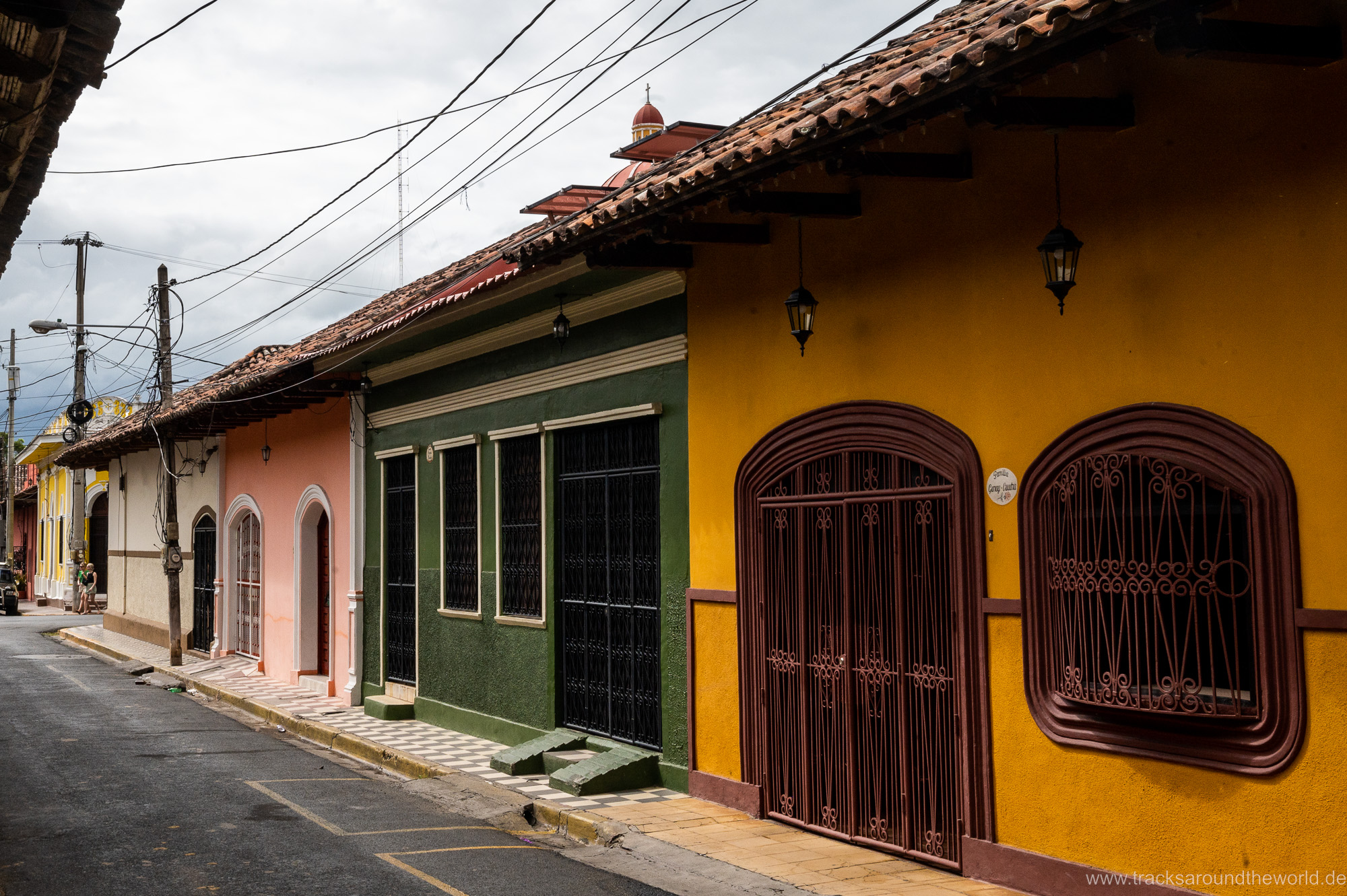
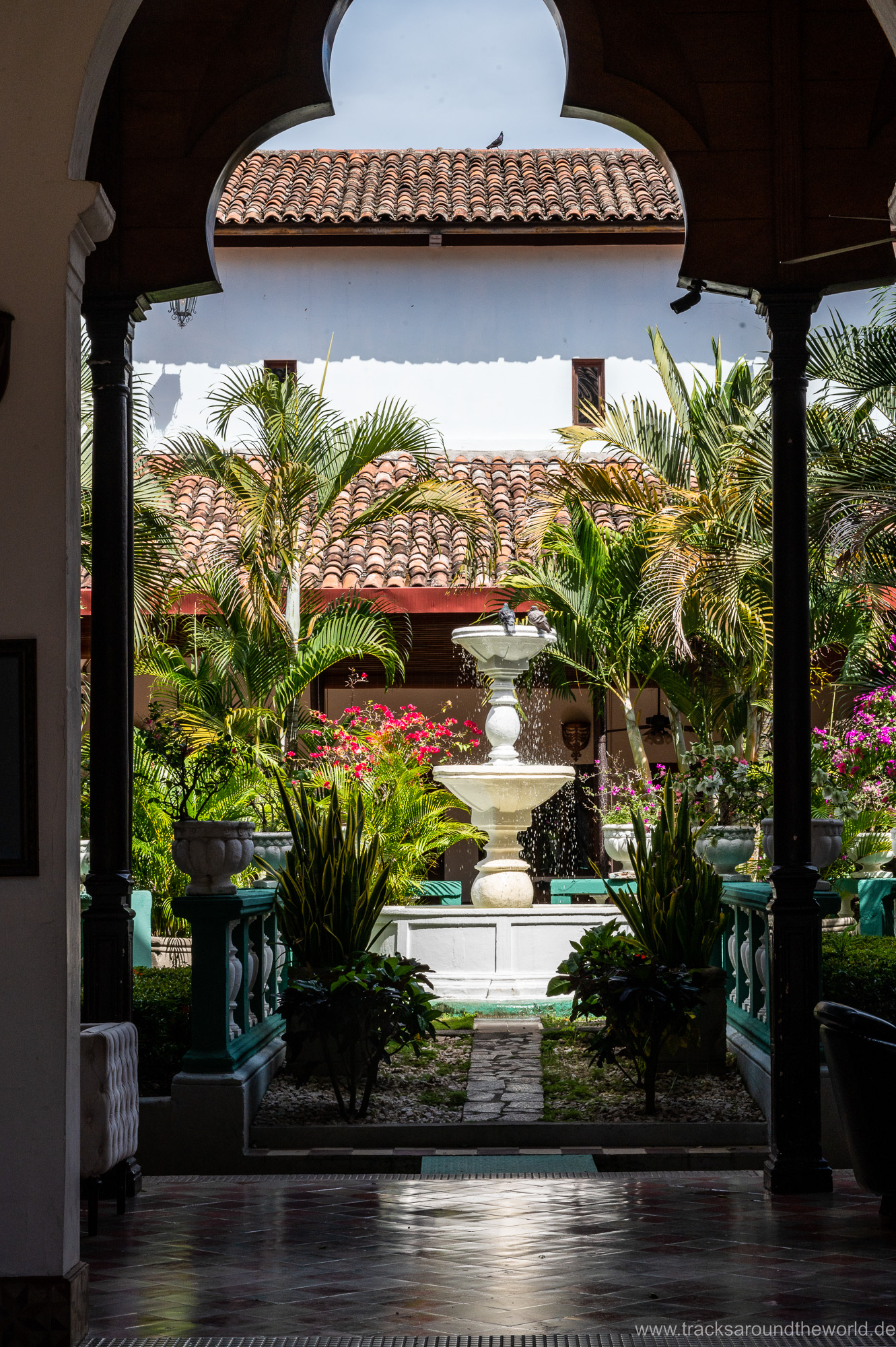
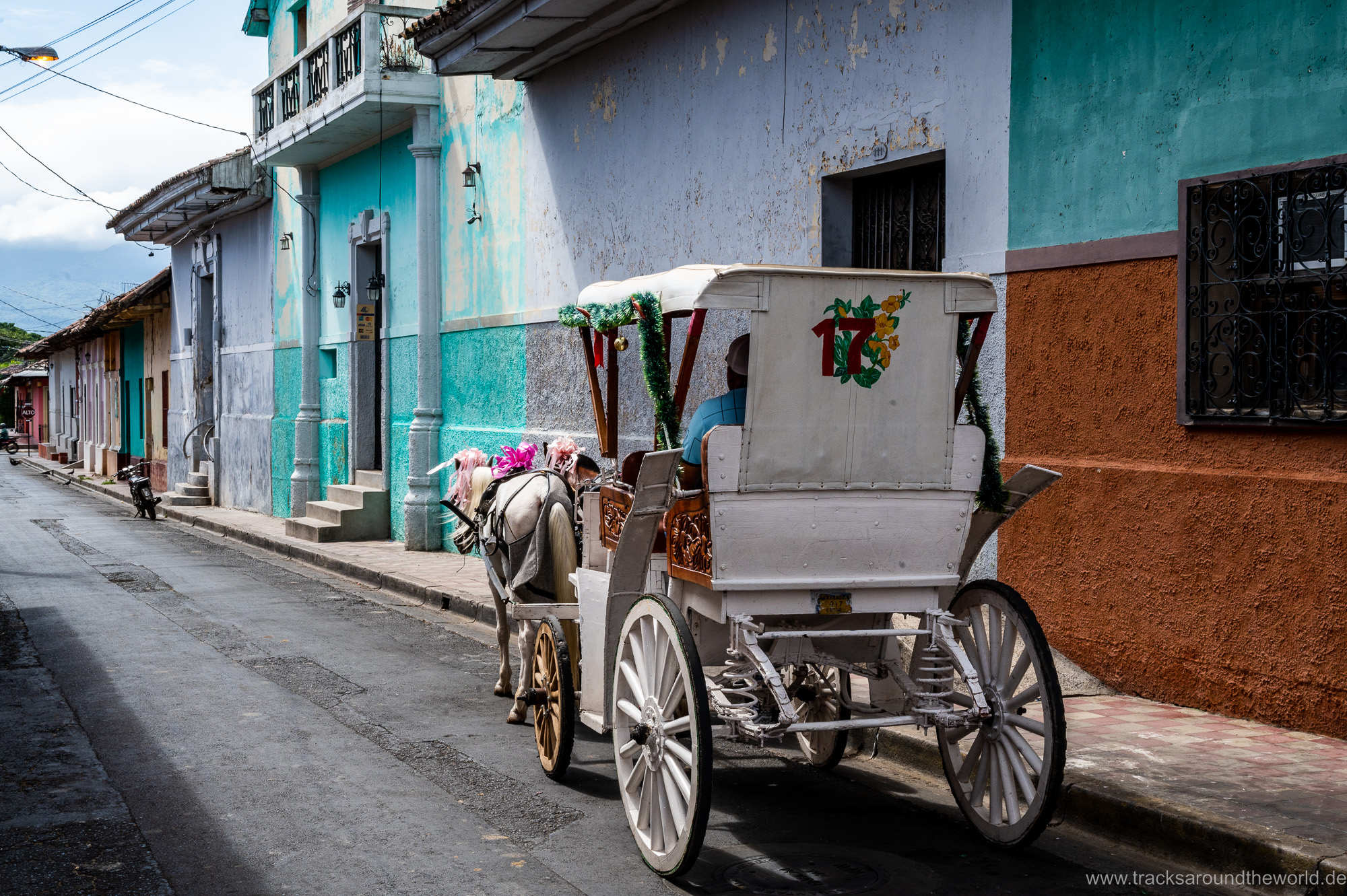
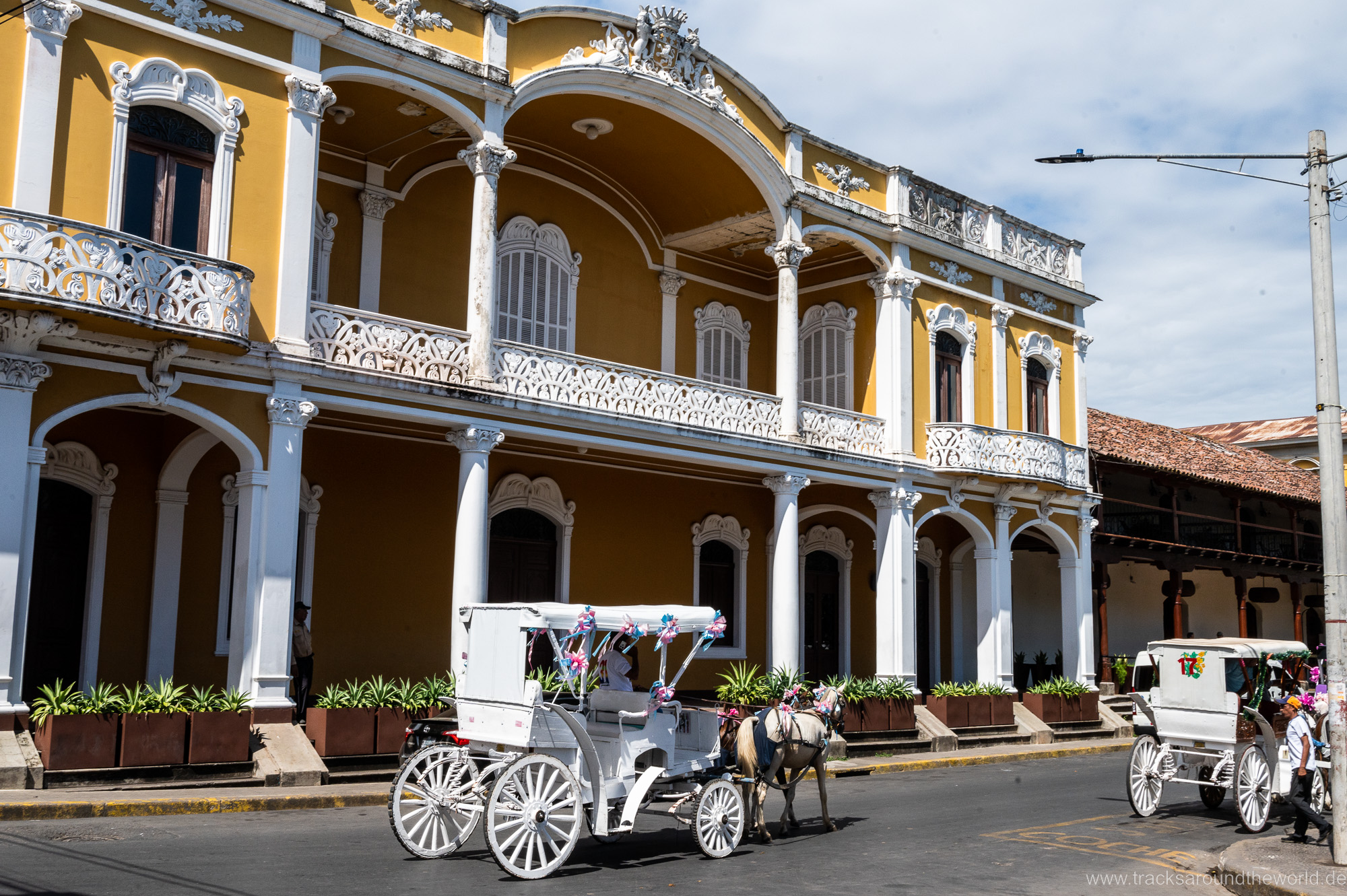
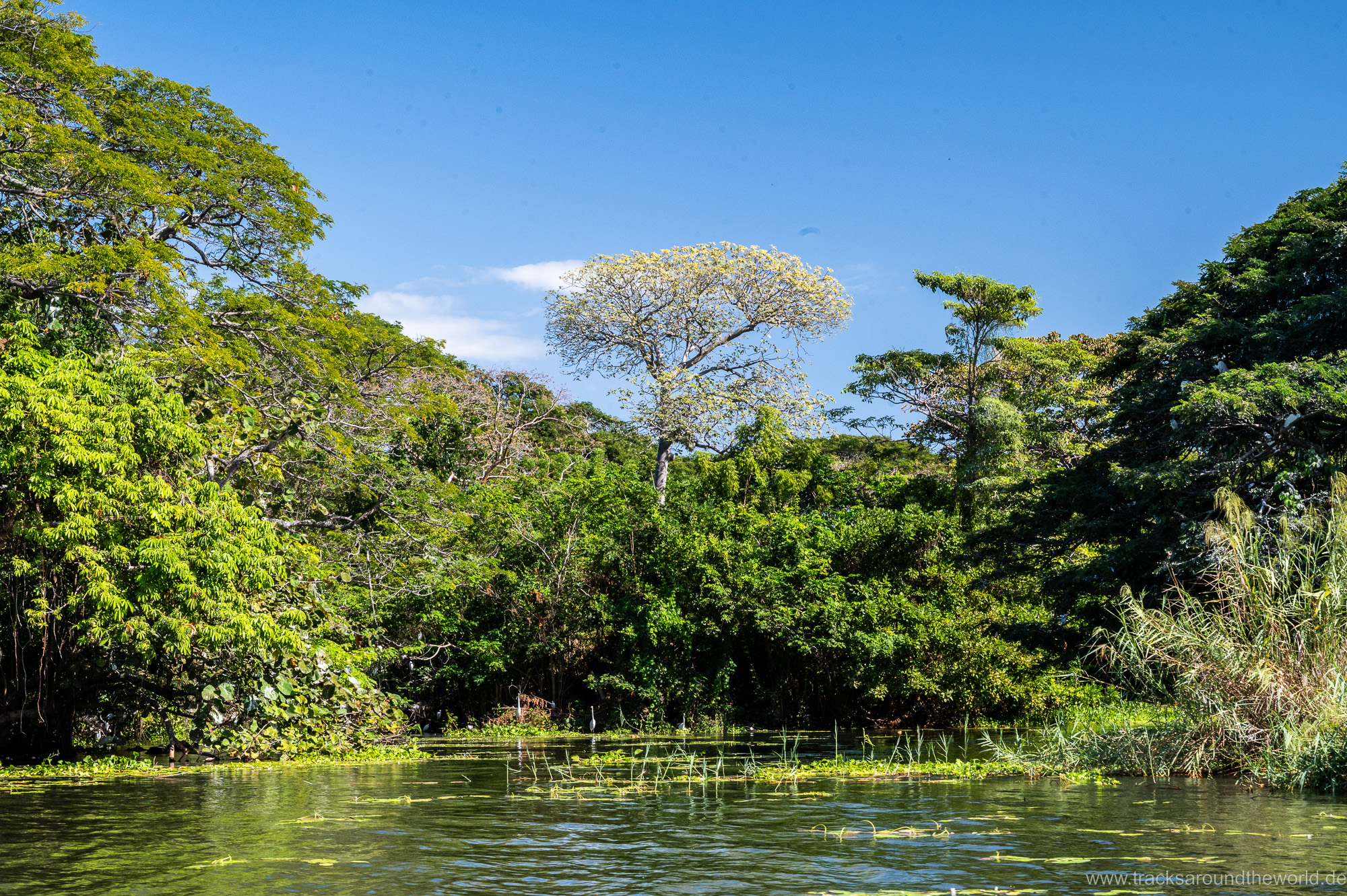
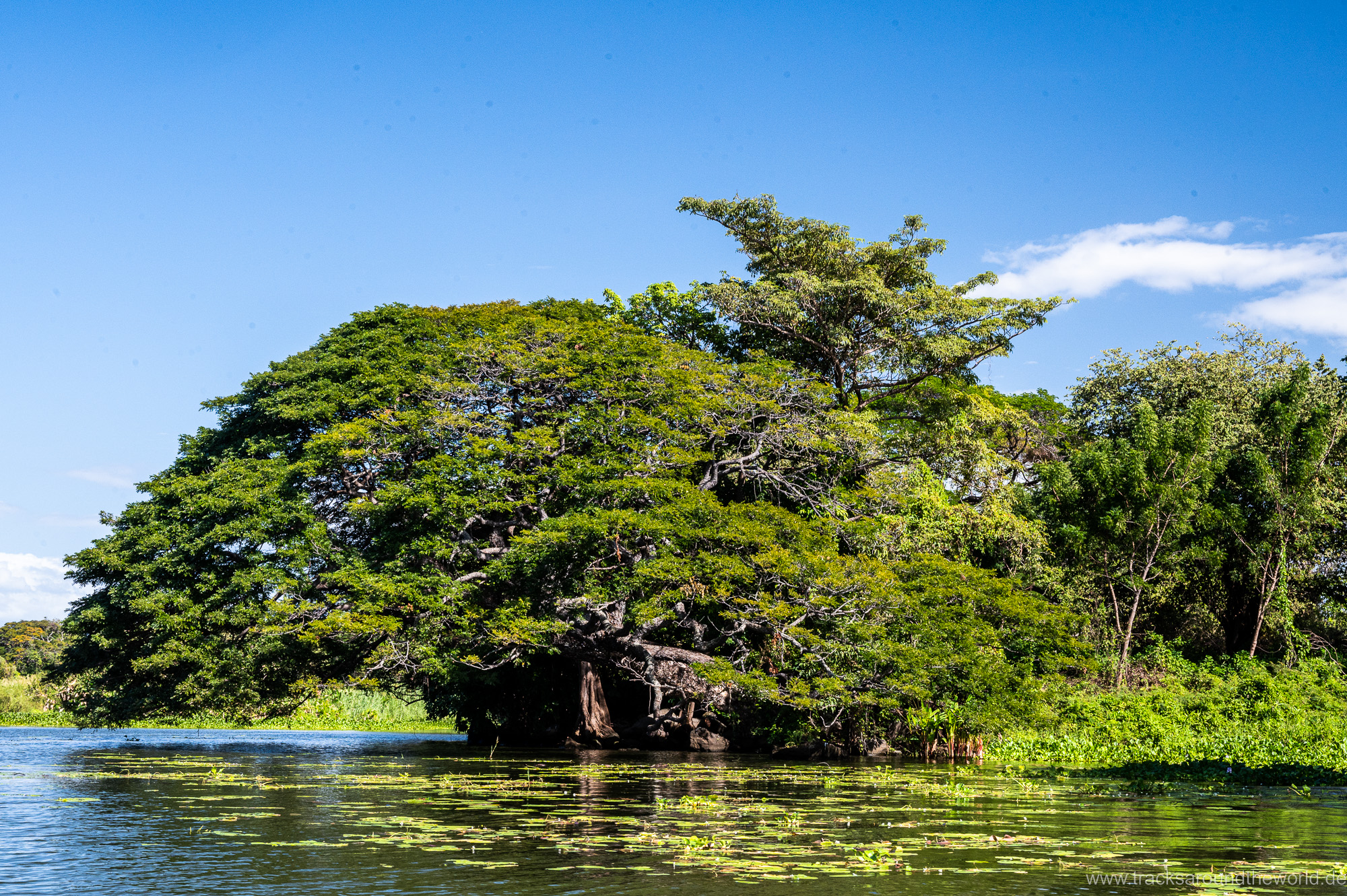
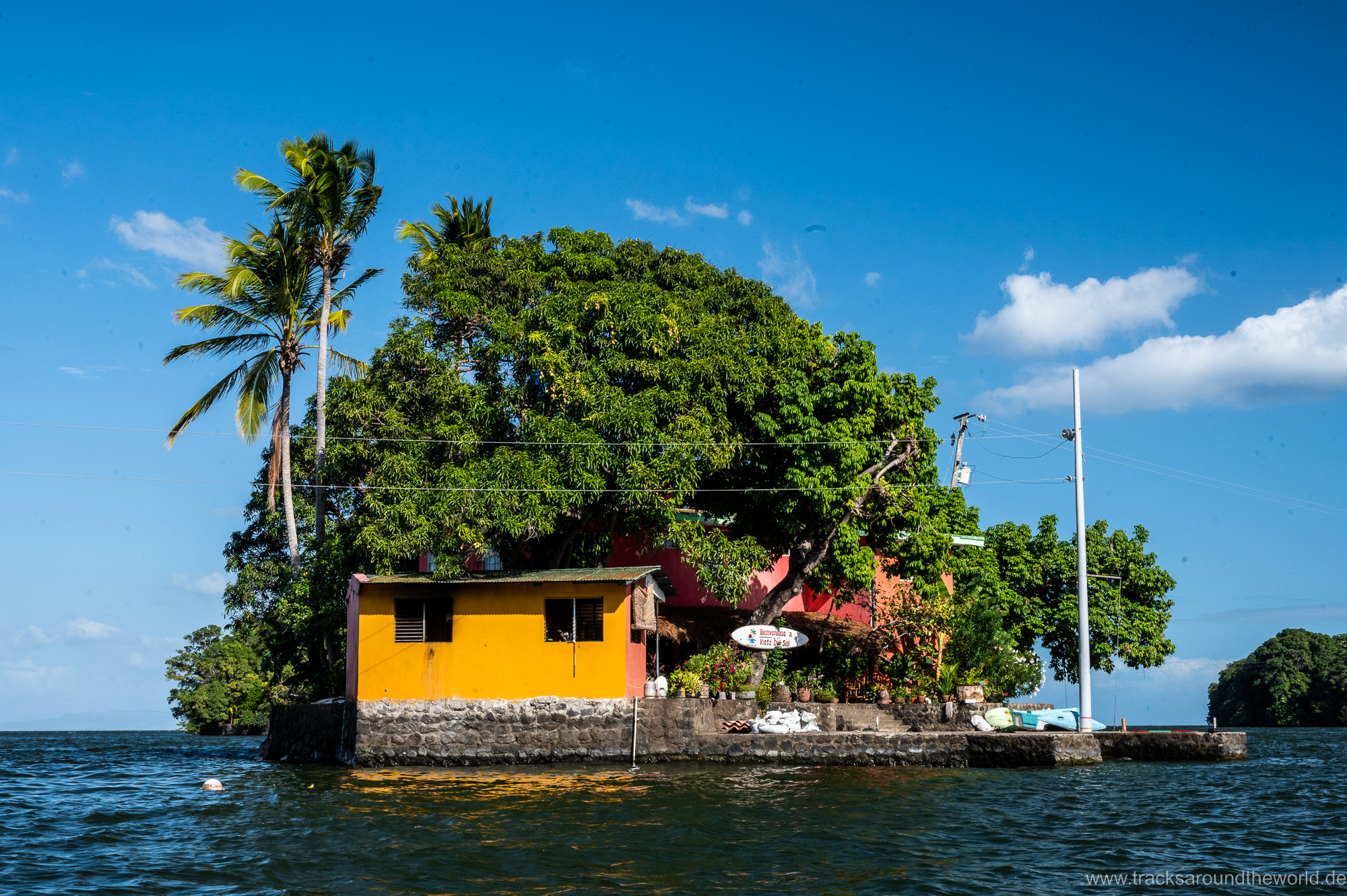
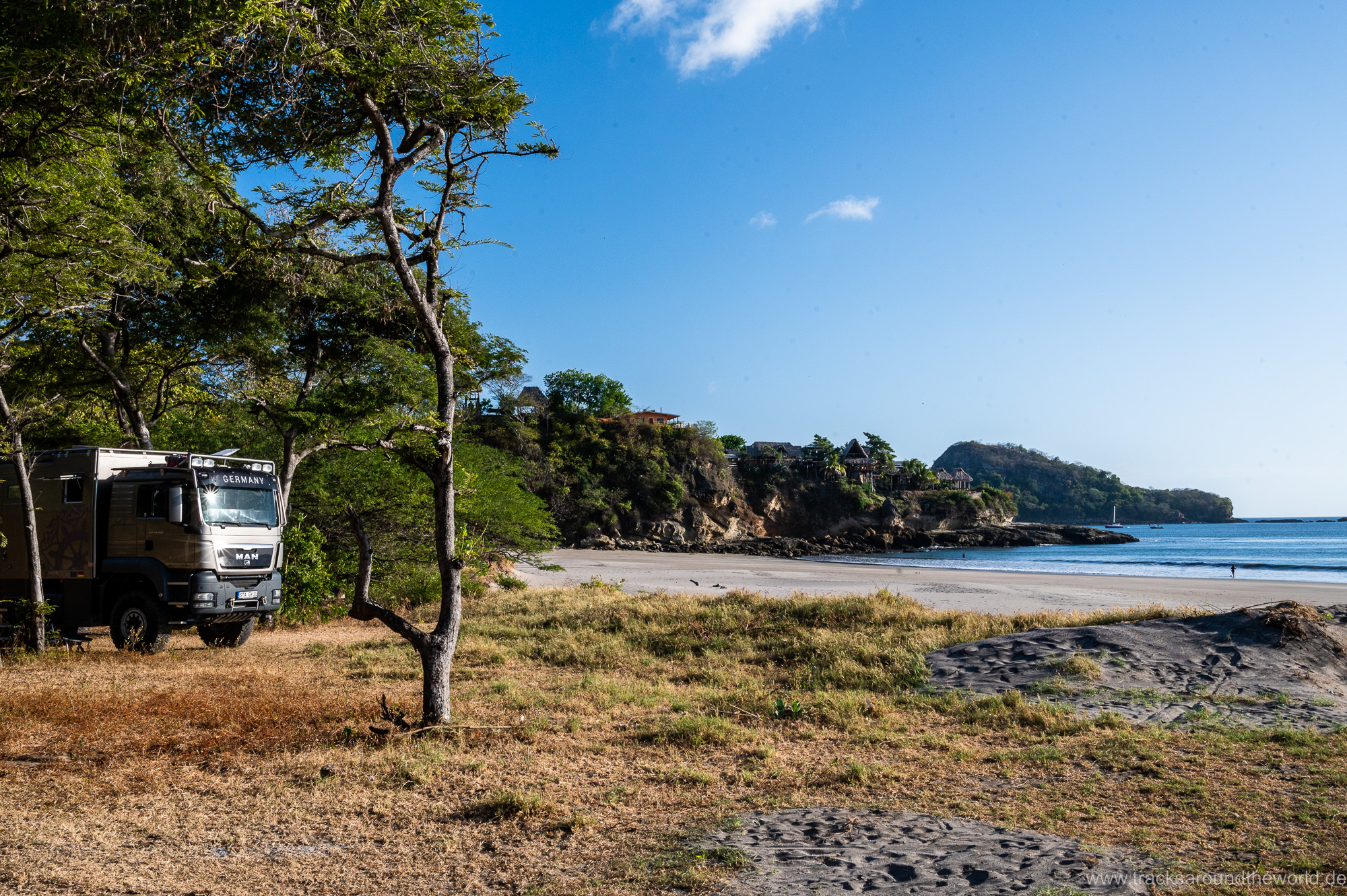
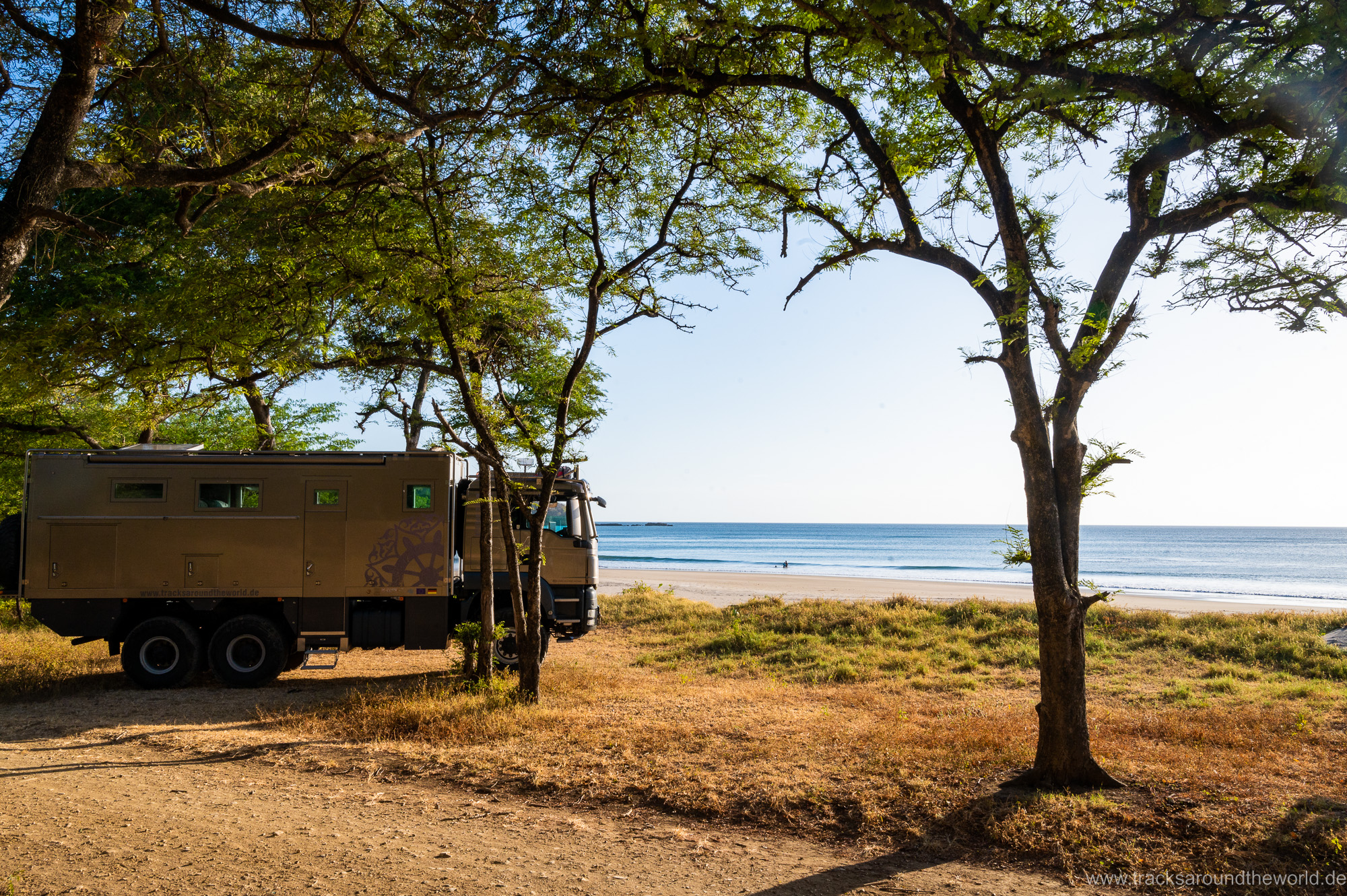
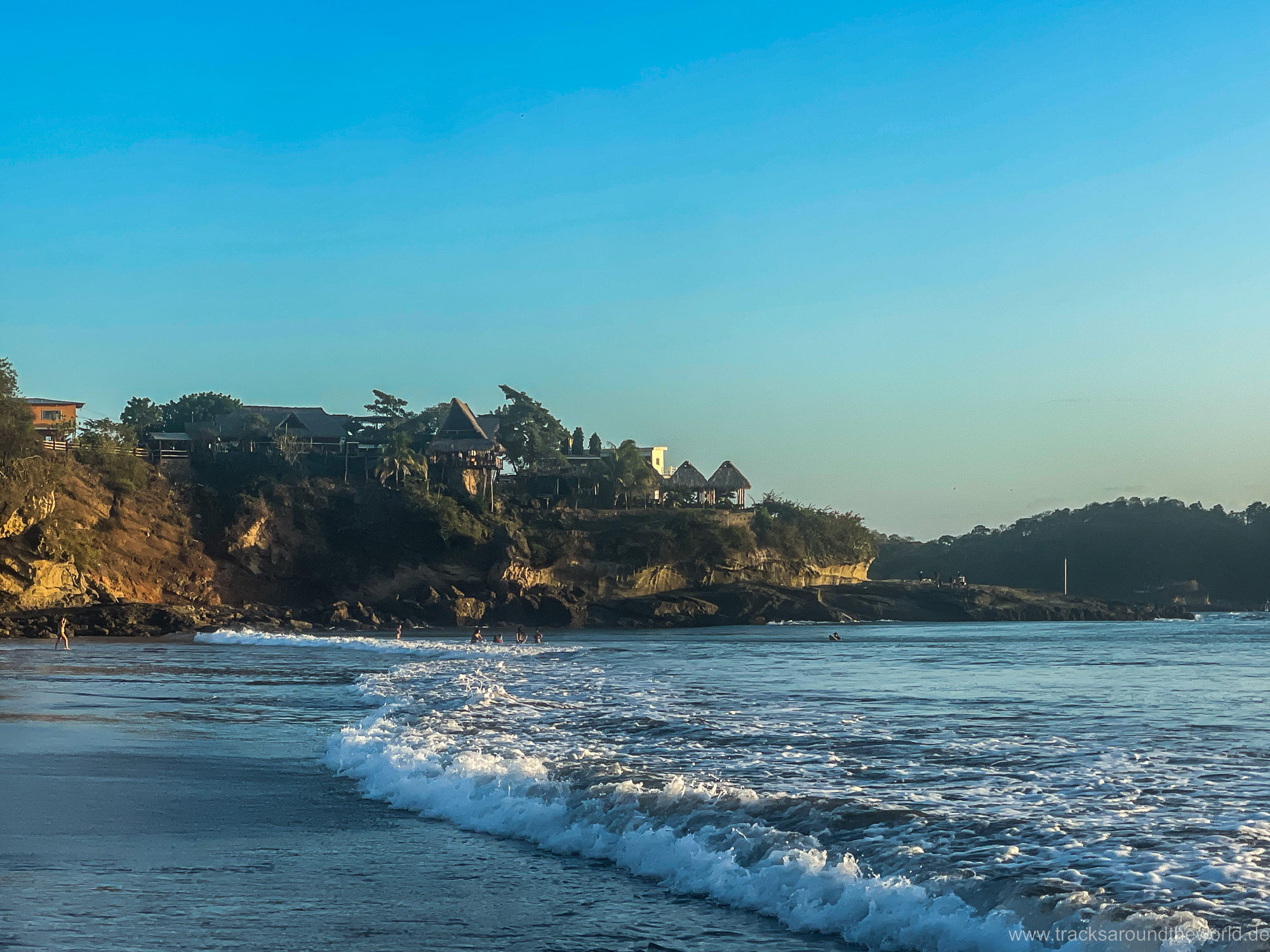
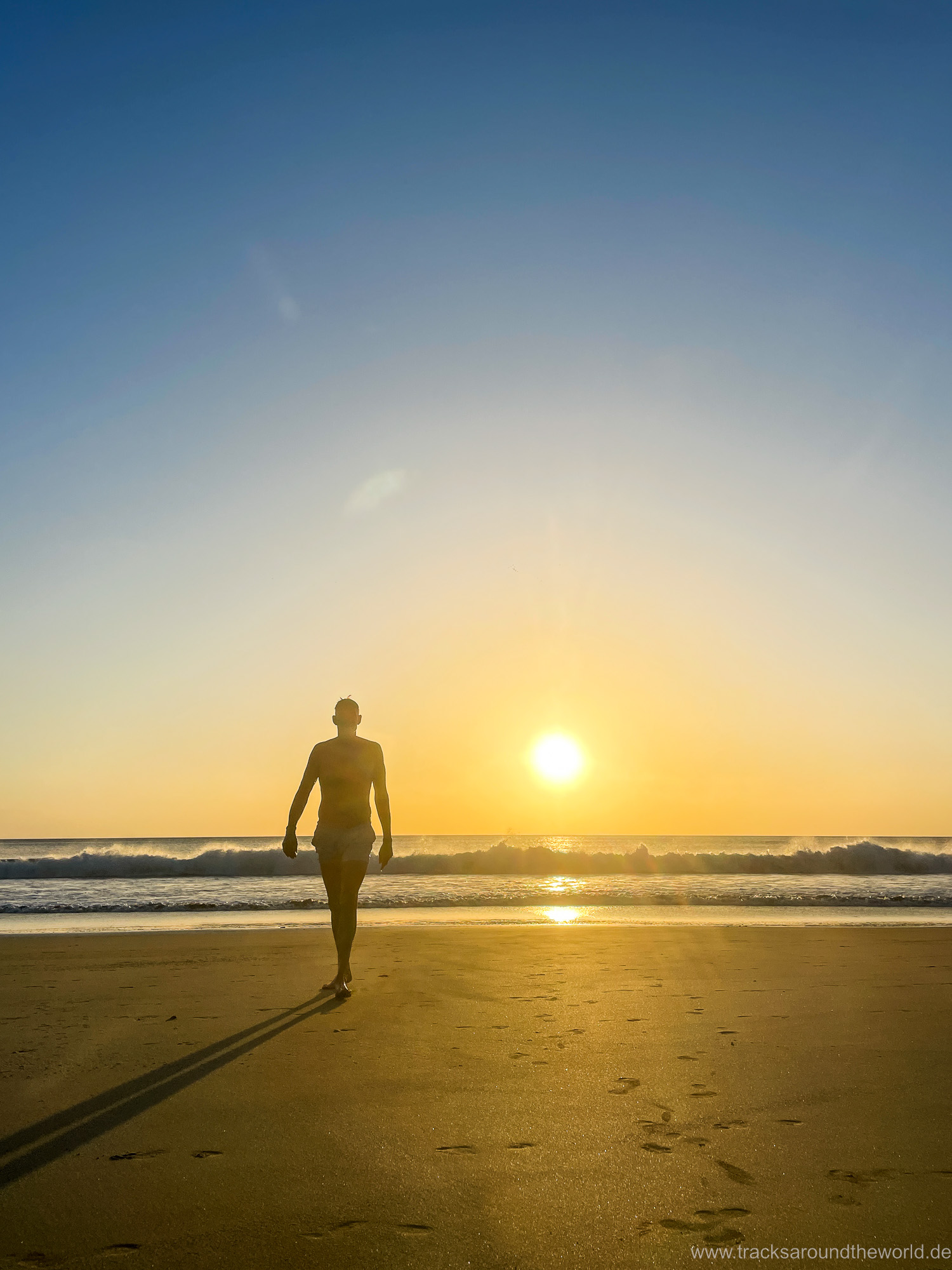
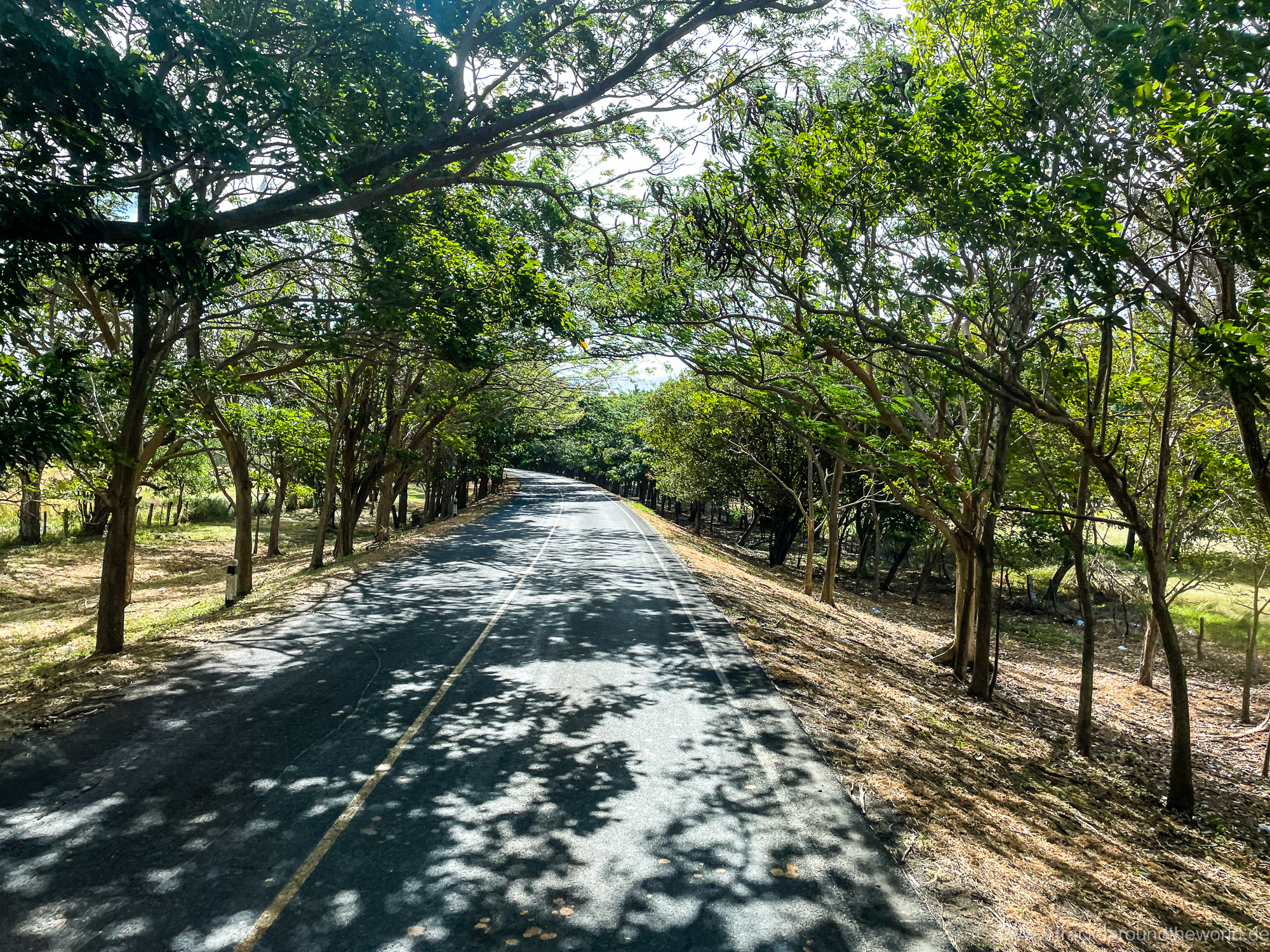
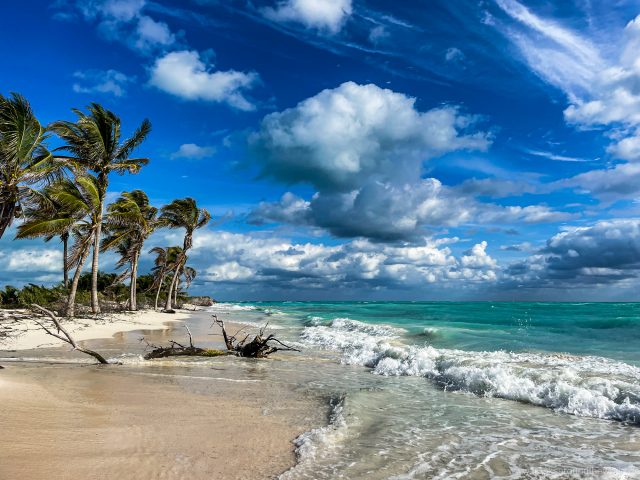
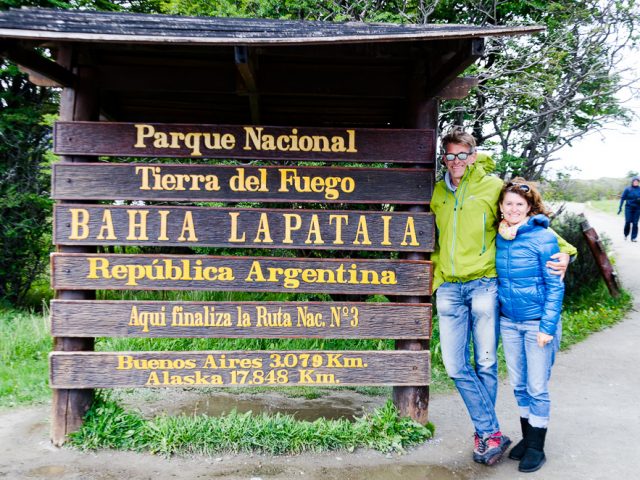
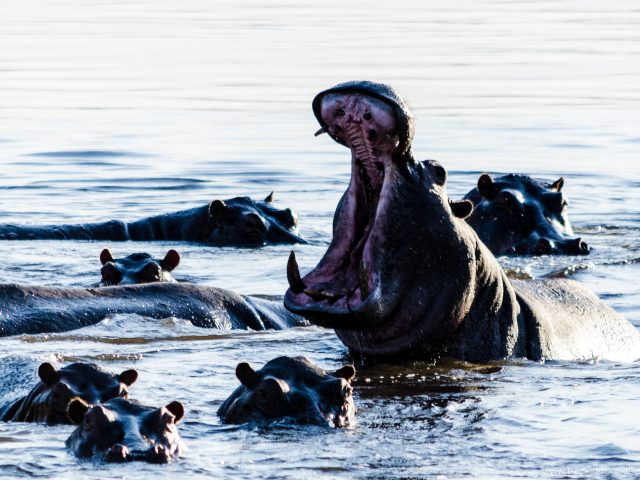
You could resist the visit to Little corn island …. .? A real paradise only accessible by boat … 😅😎👍 well maybe some other time, I love the pictures 👍👍😁
I’m TRULY SORRY Nicaraguan people were not that friendly to you two perhaps poverty and misery don’t allow them to be that happy to tourists because these poor Nicaraguans simply can’t be happy with ie with having to feed many mouths without resources. YOUR PICTURES OF GRANADA & SUCH ARE AMAZING ANYWAY! 2nd chance Christmas Time maybe? Smiles!
Hi!
Yes, you are right. Sorry for you as obviously you are very, very kind. This might be the reason, but after 54 countries we could say other very poor countries and people are much more open and friendly. We thought it is the history sometimes. E.g. Angola was a bit similar. But anyway, it should be no judging, just comparison between different cultures and countries and people who read the blog are often interested exactly in these differences. Thank you so much for your kind words.
Bests
Karin & Oliver